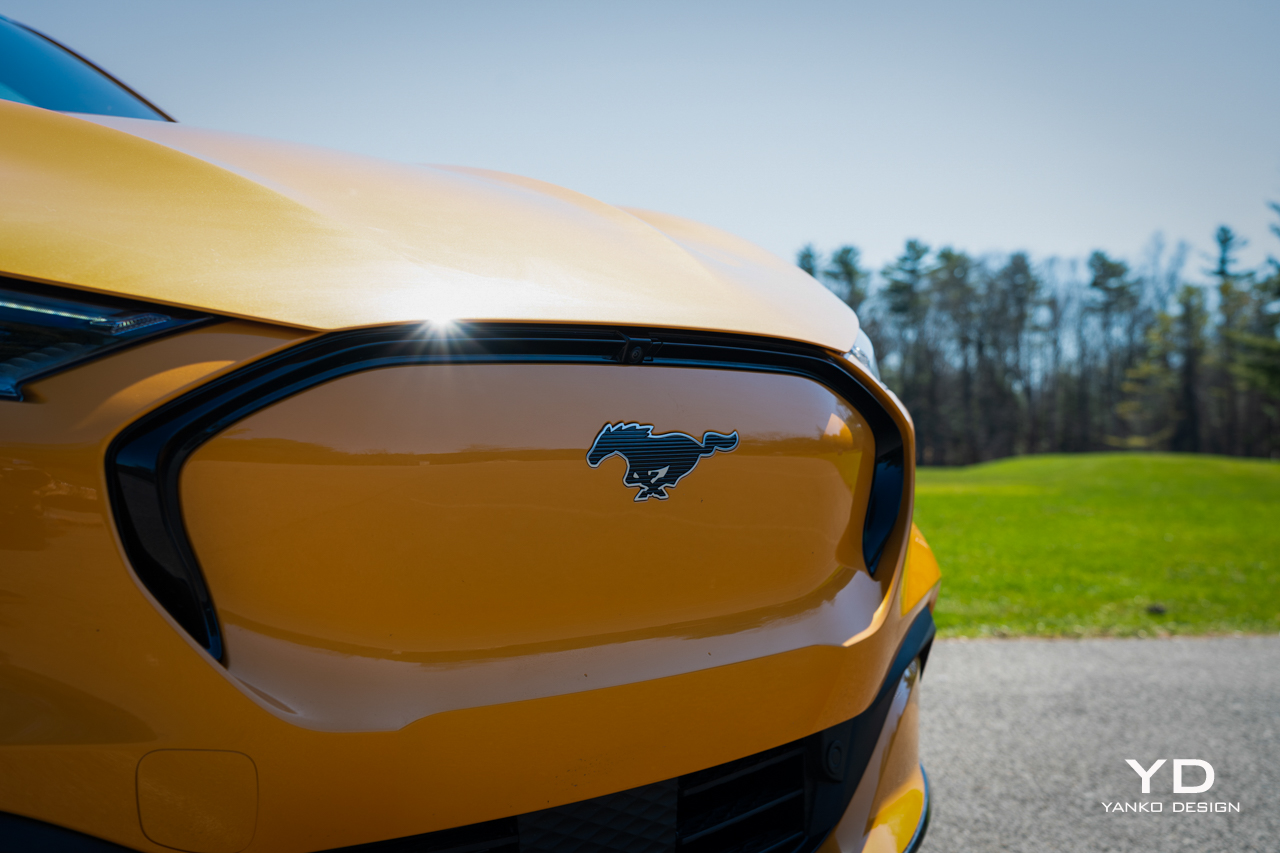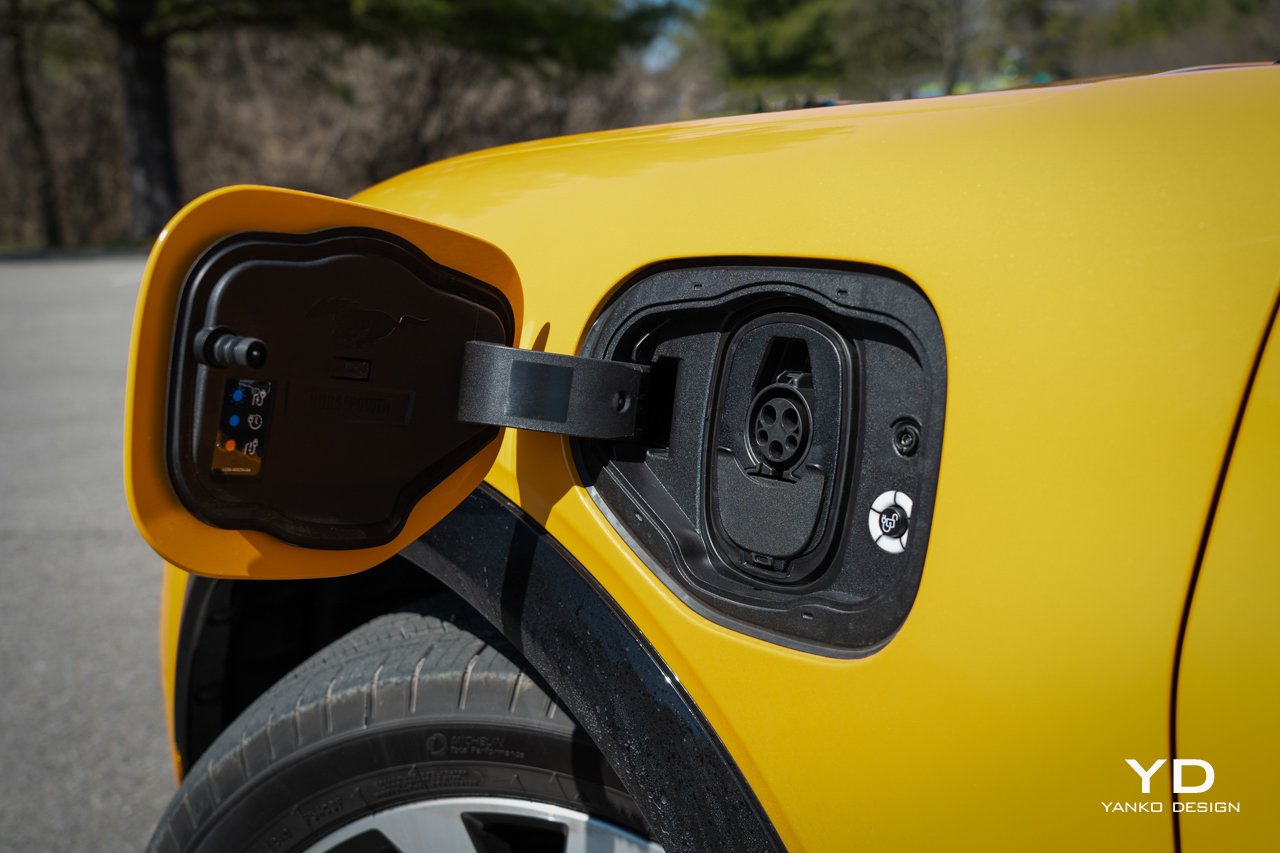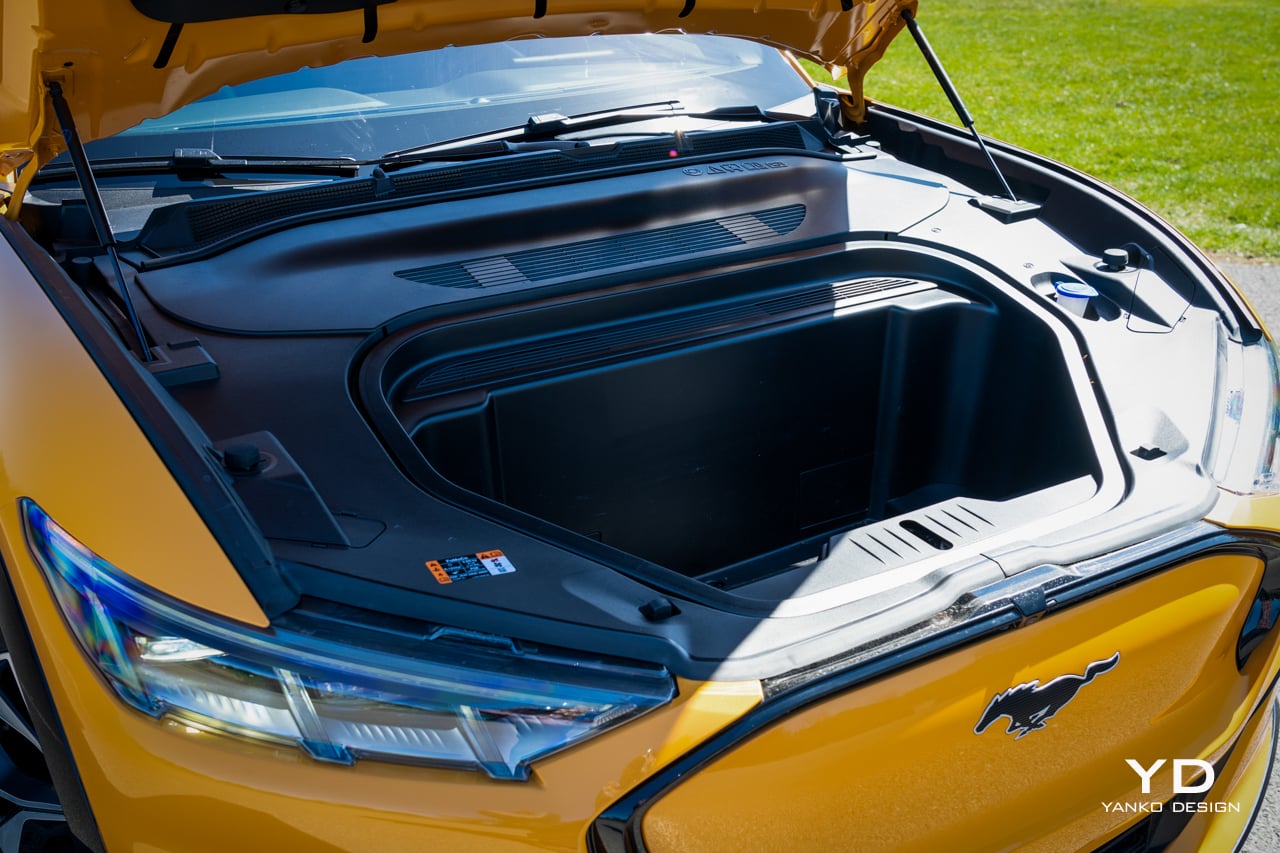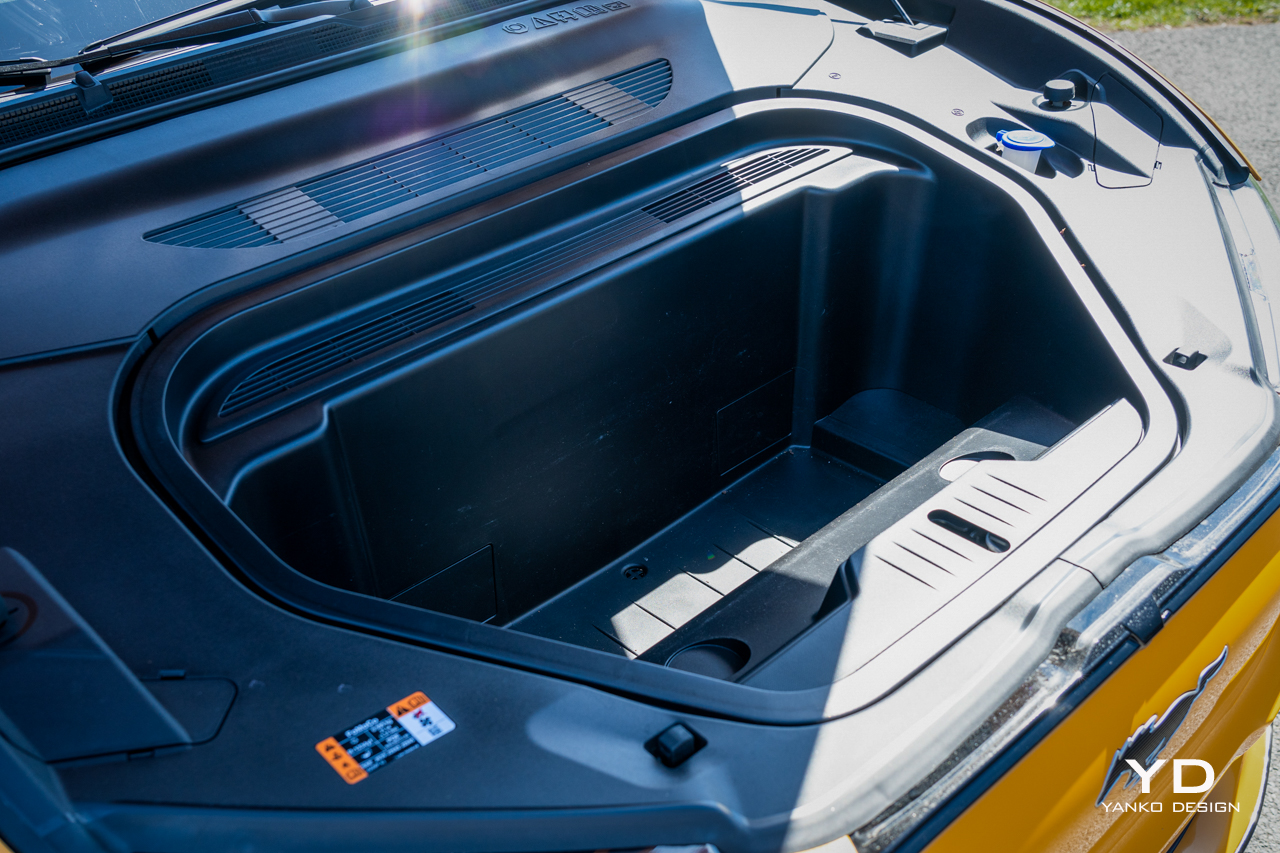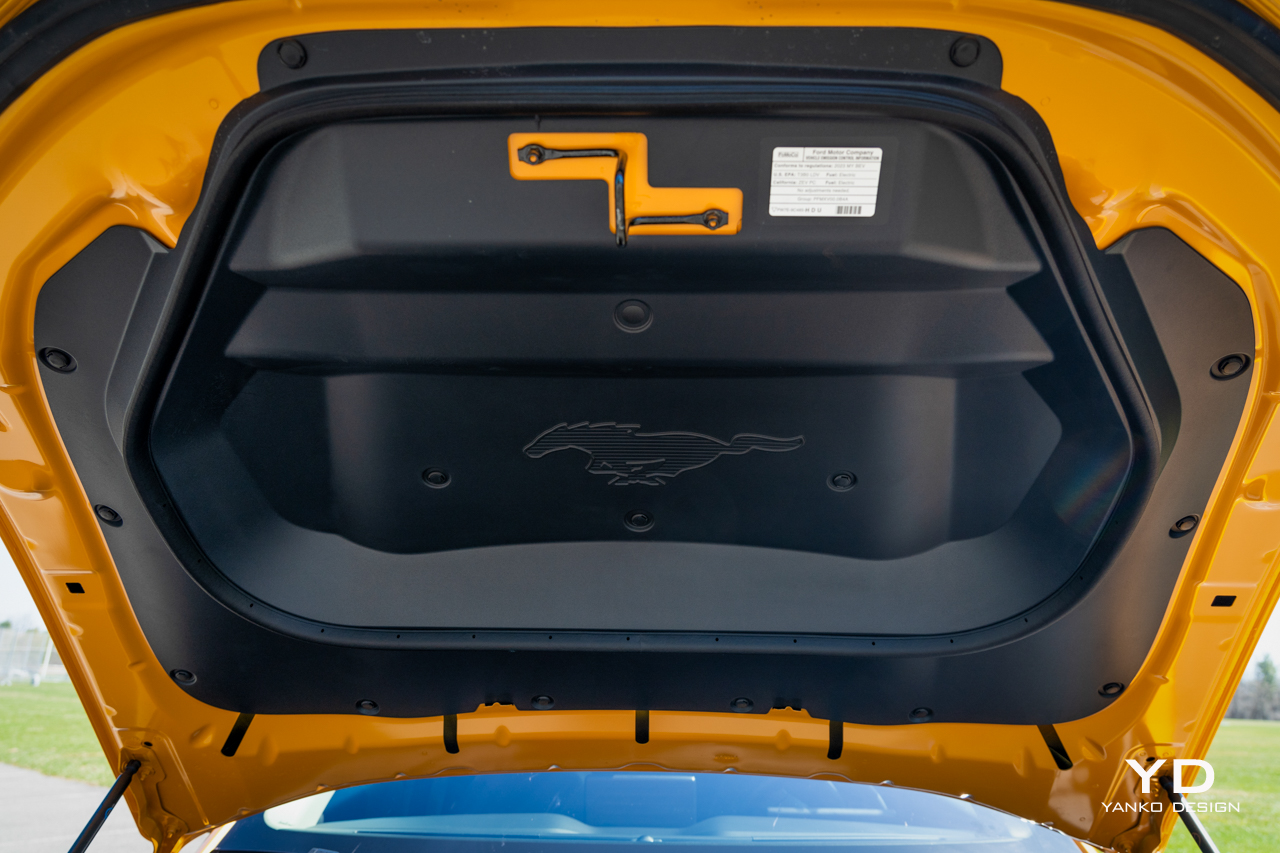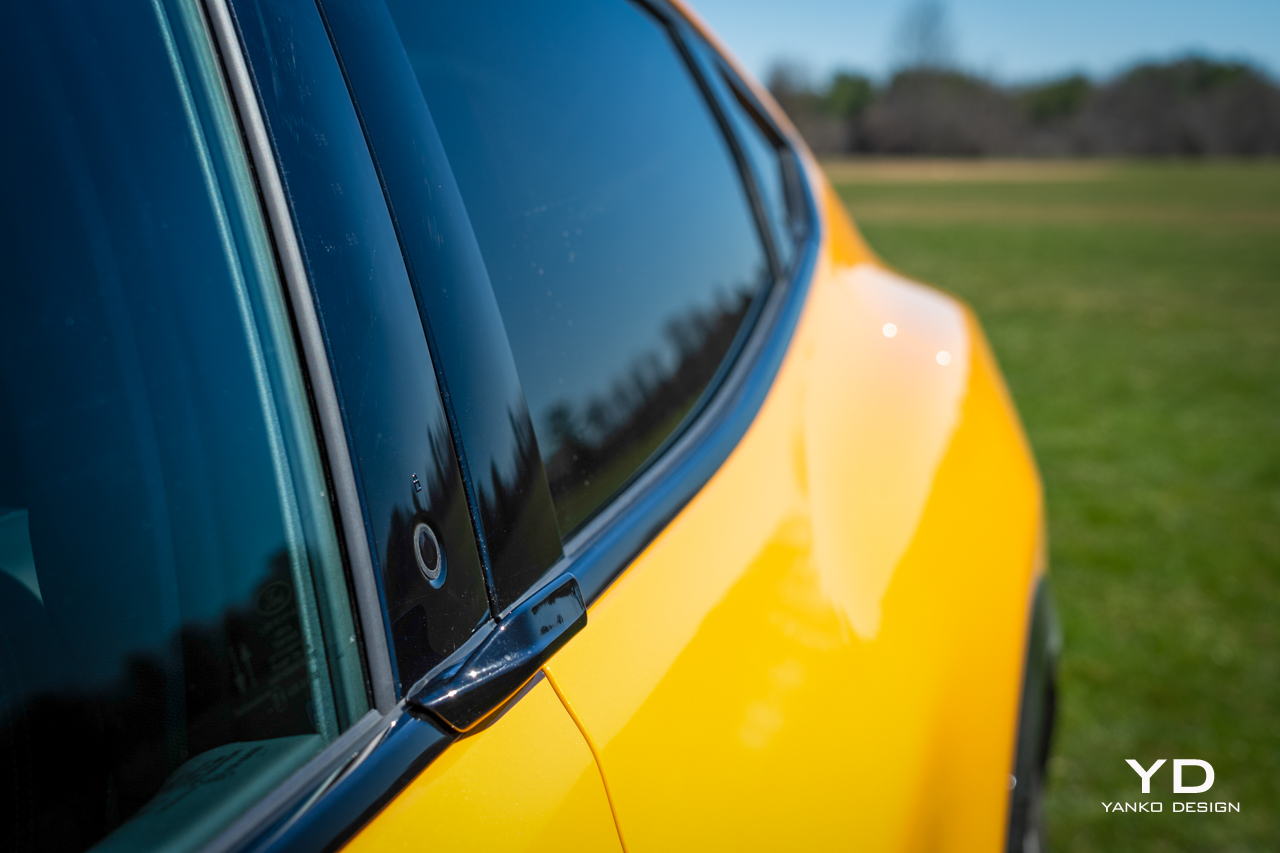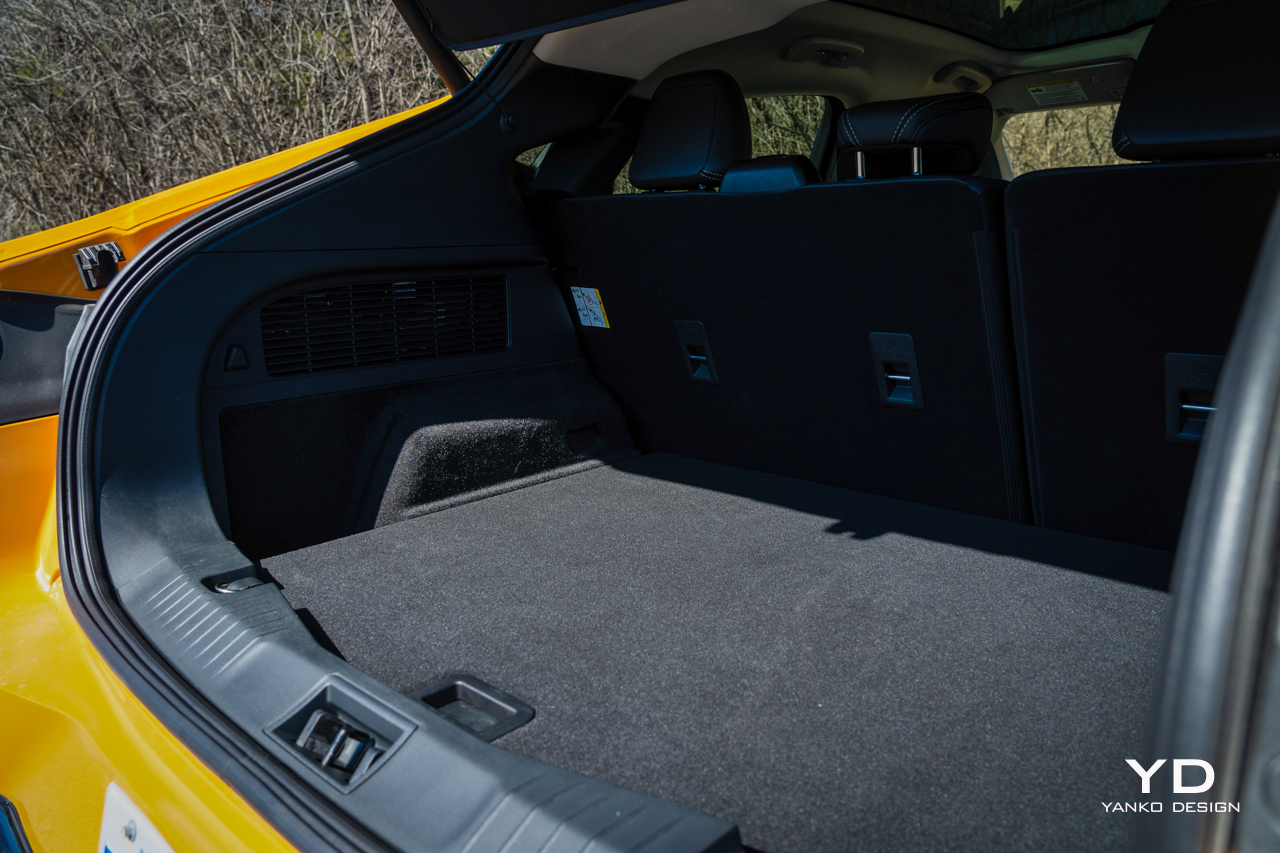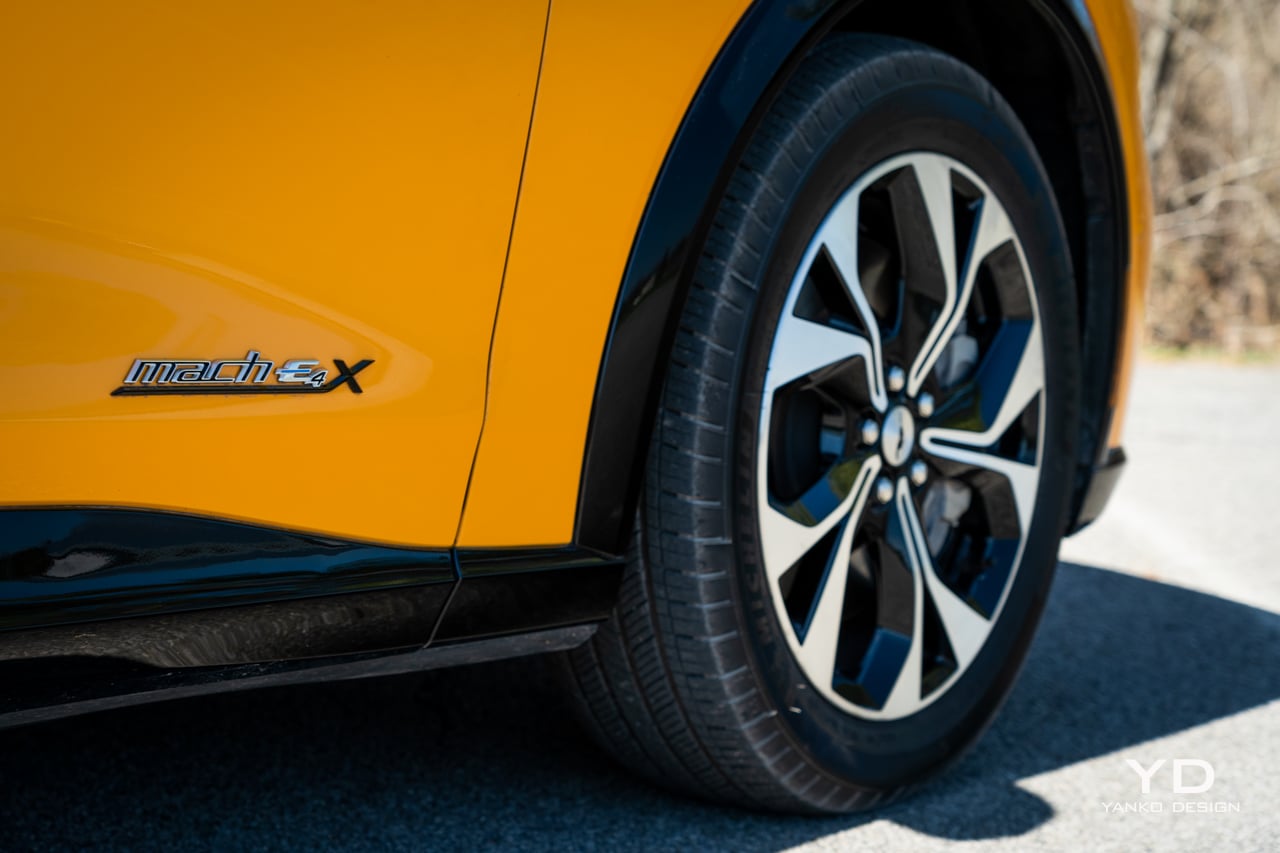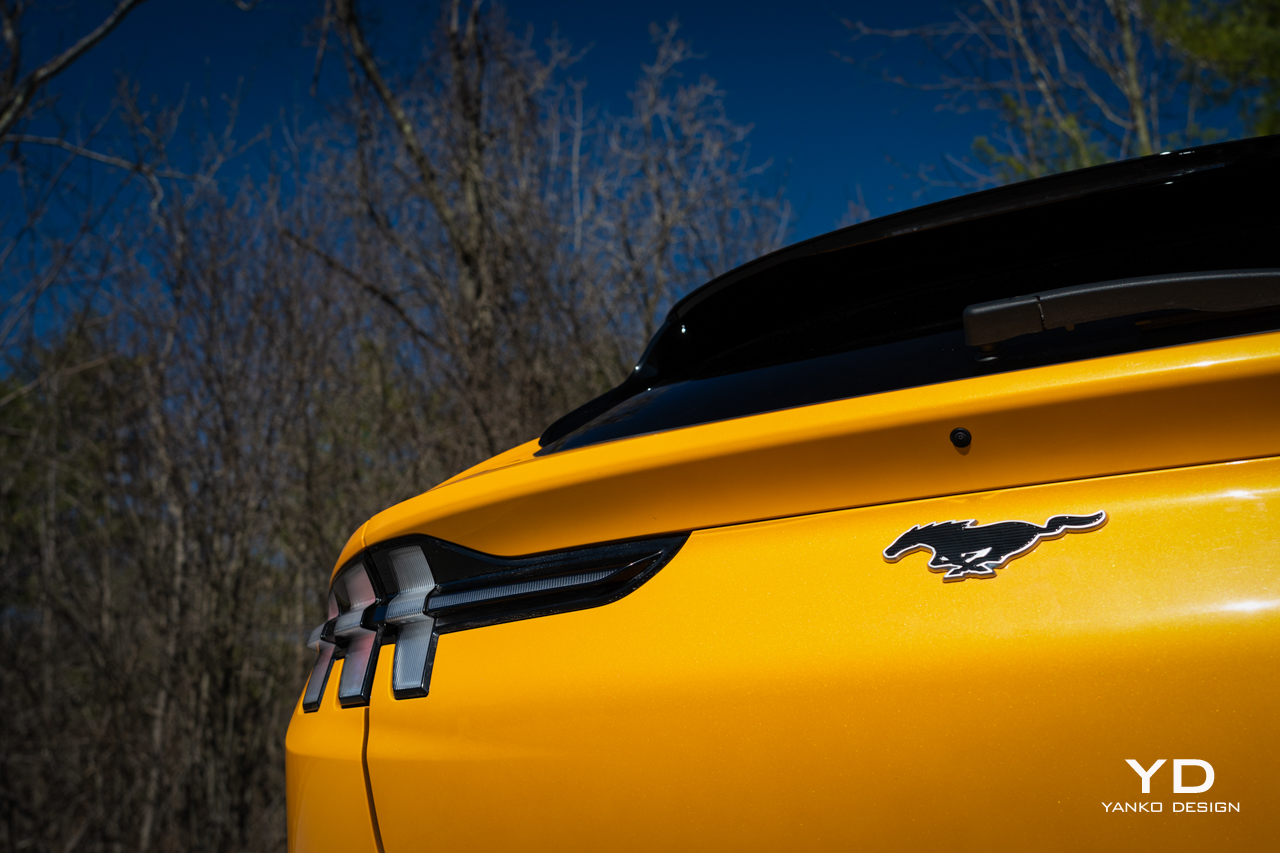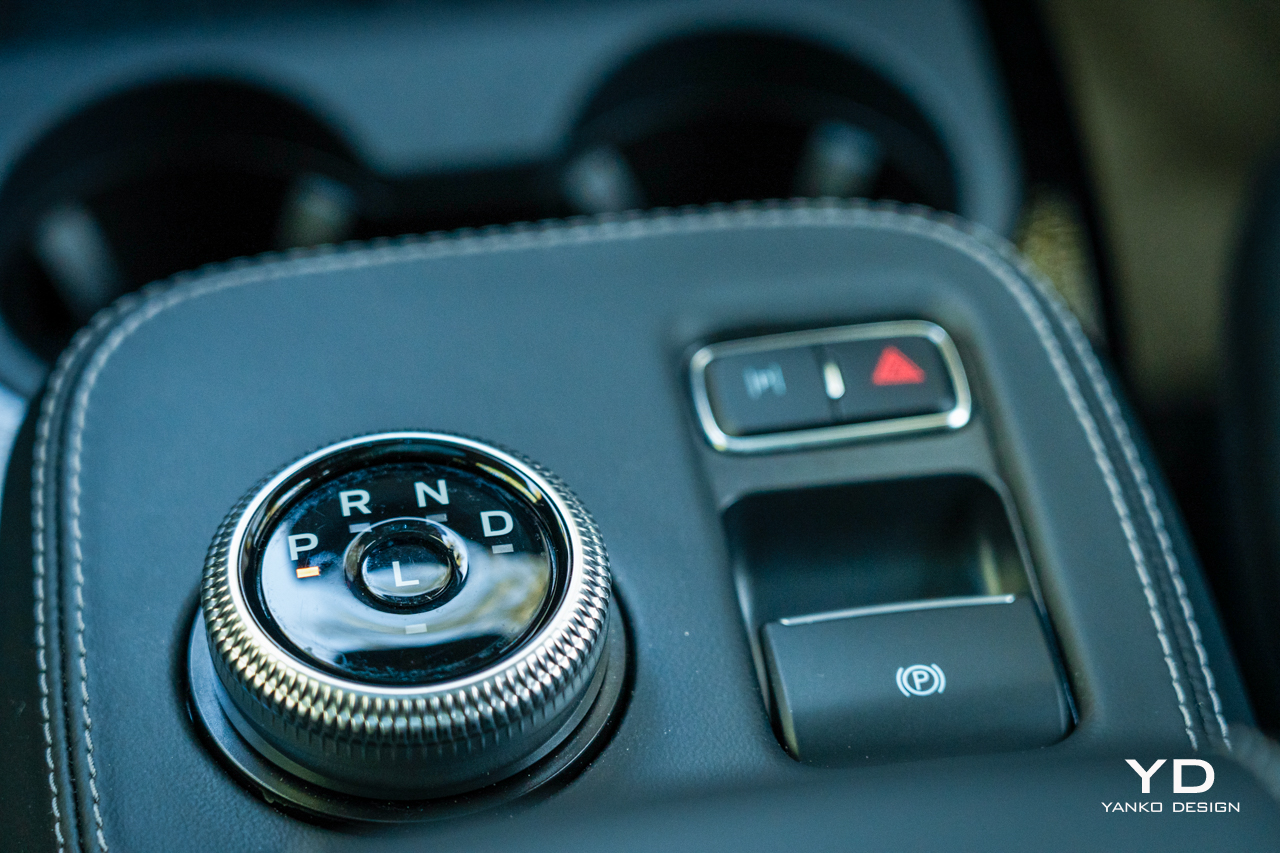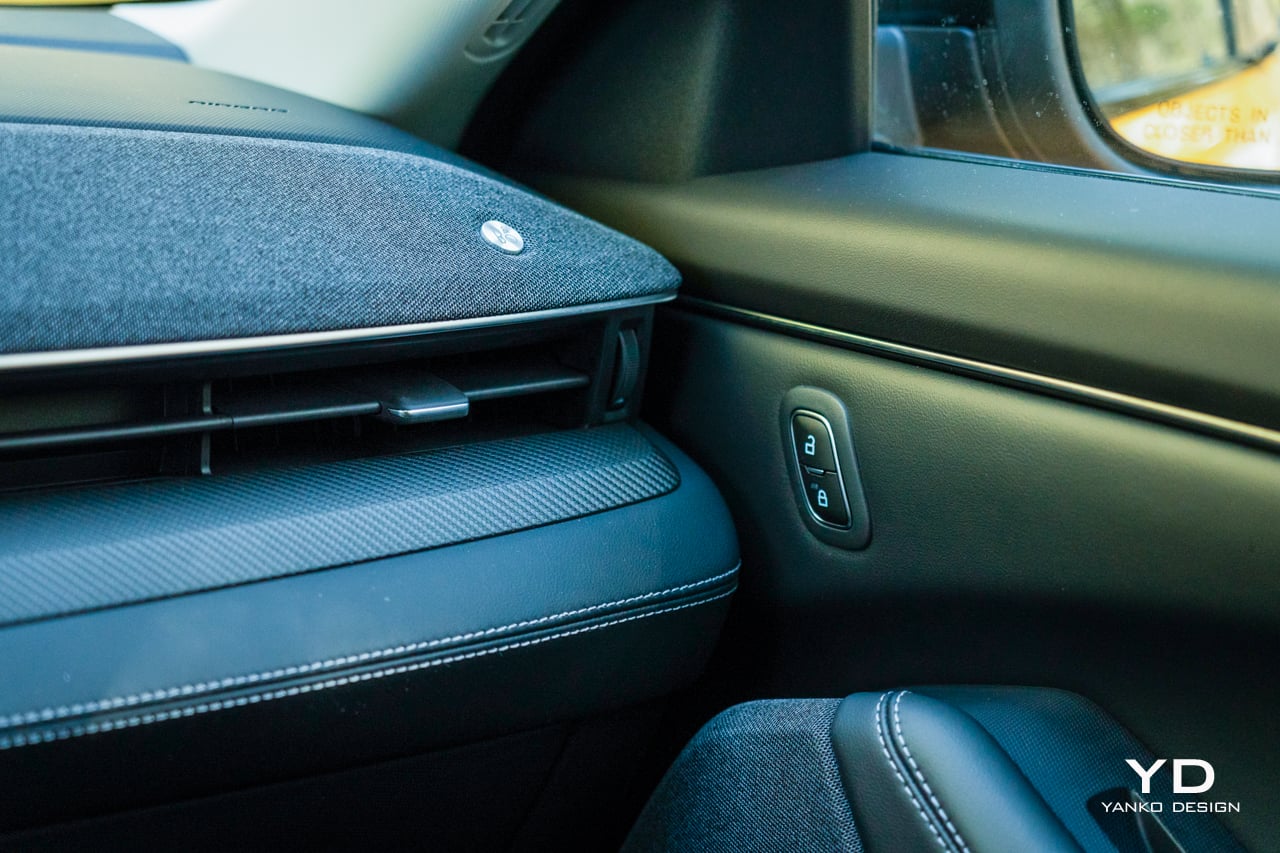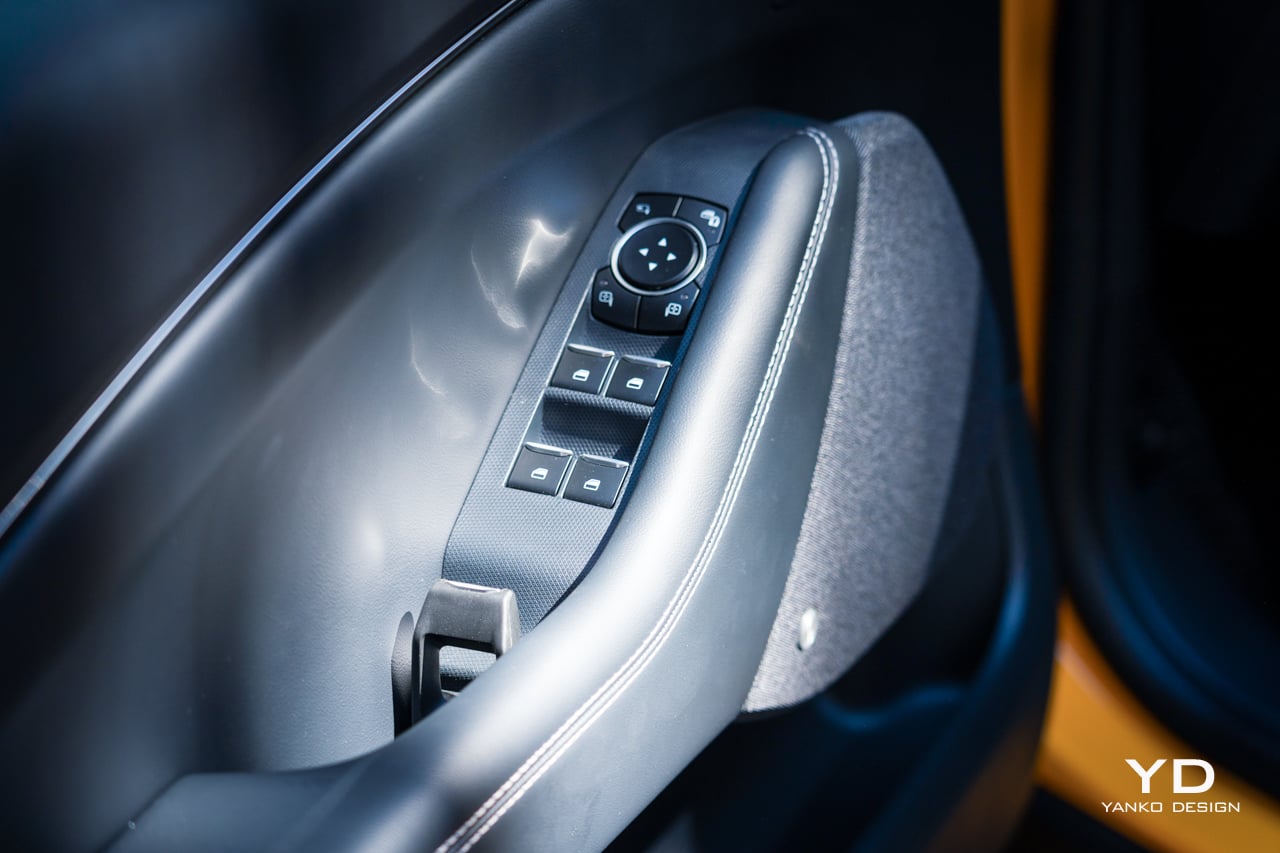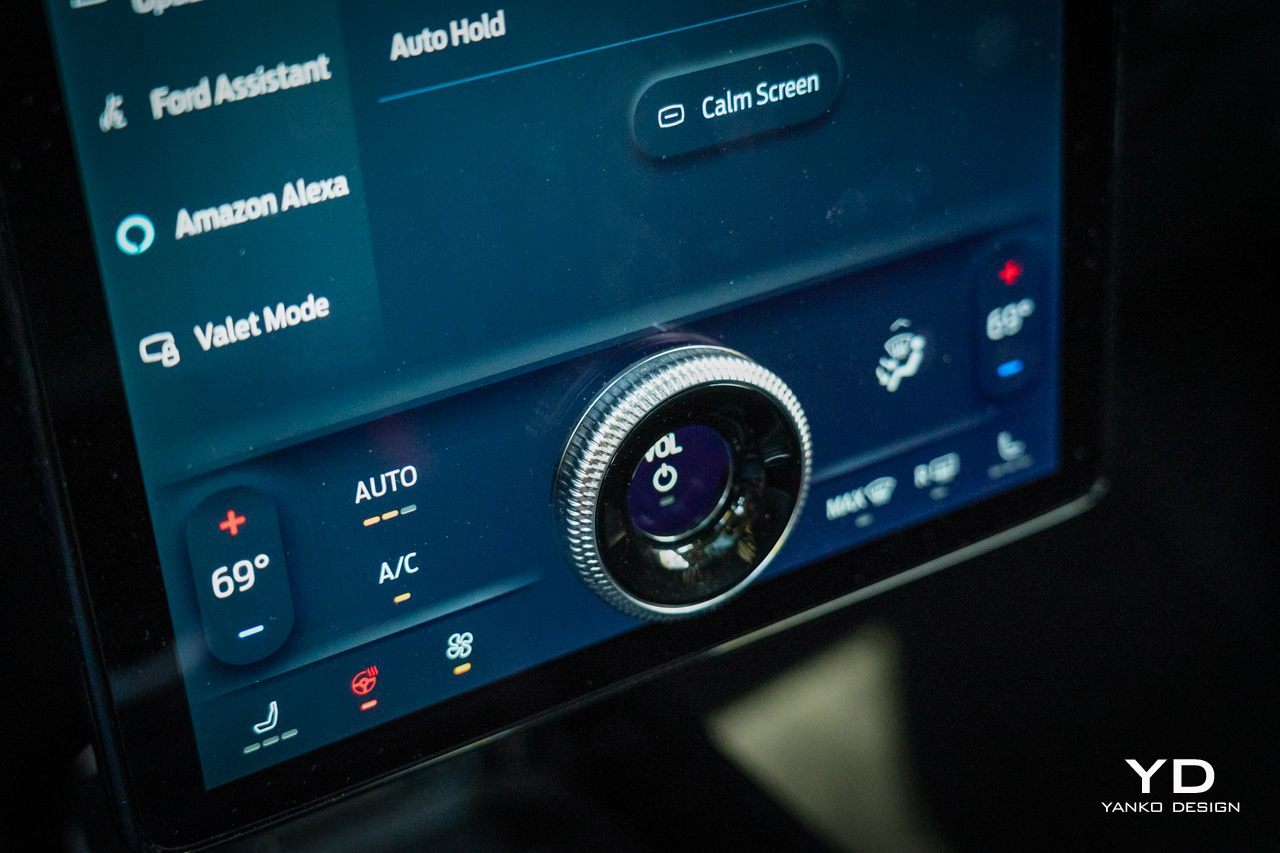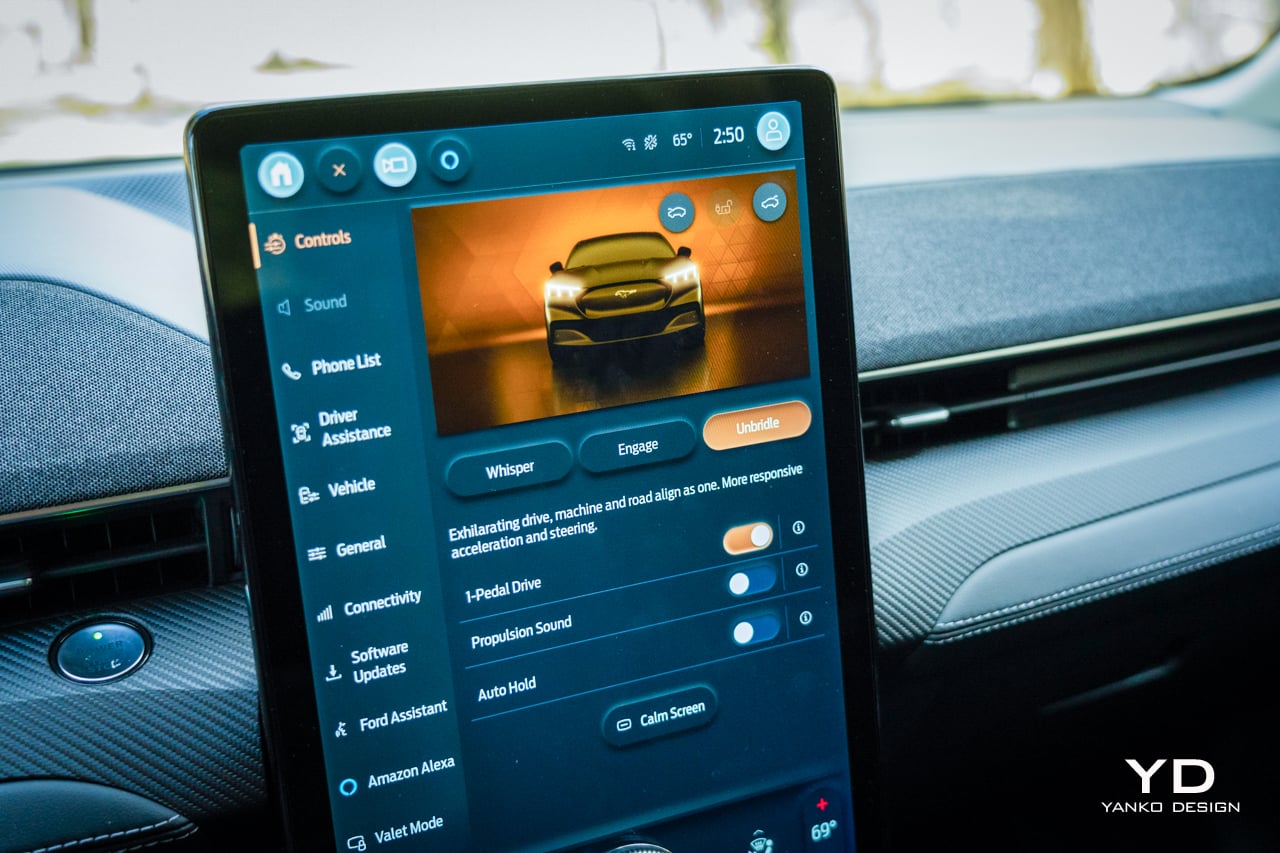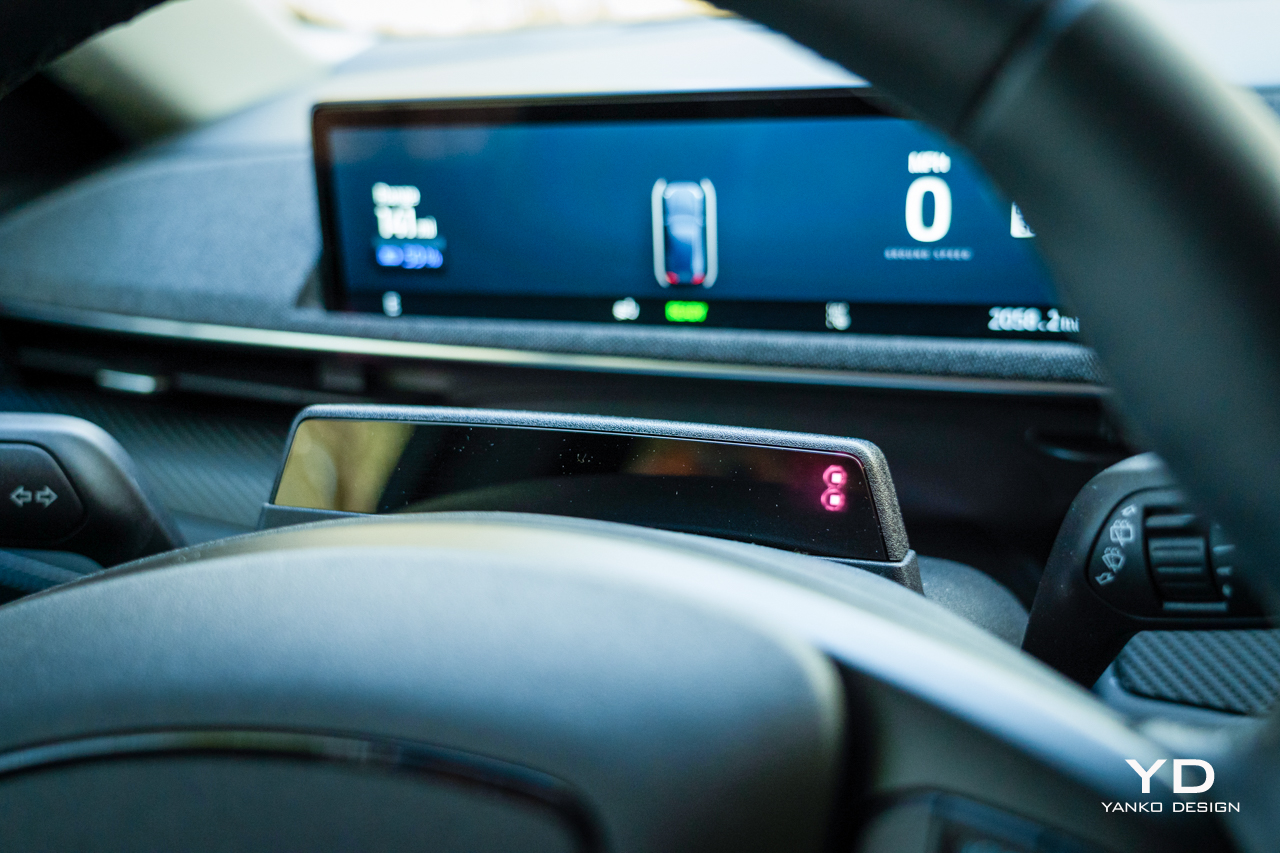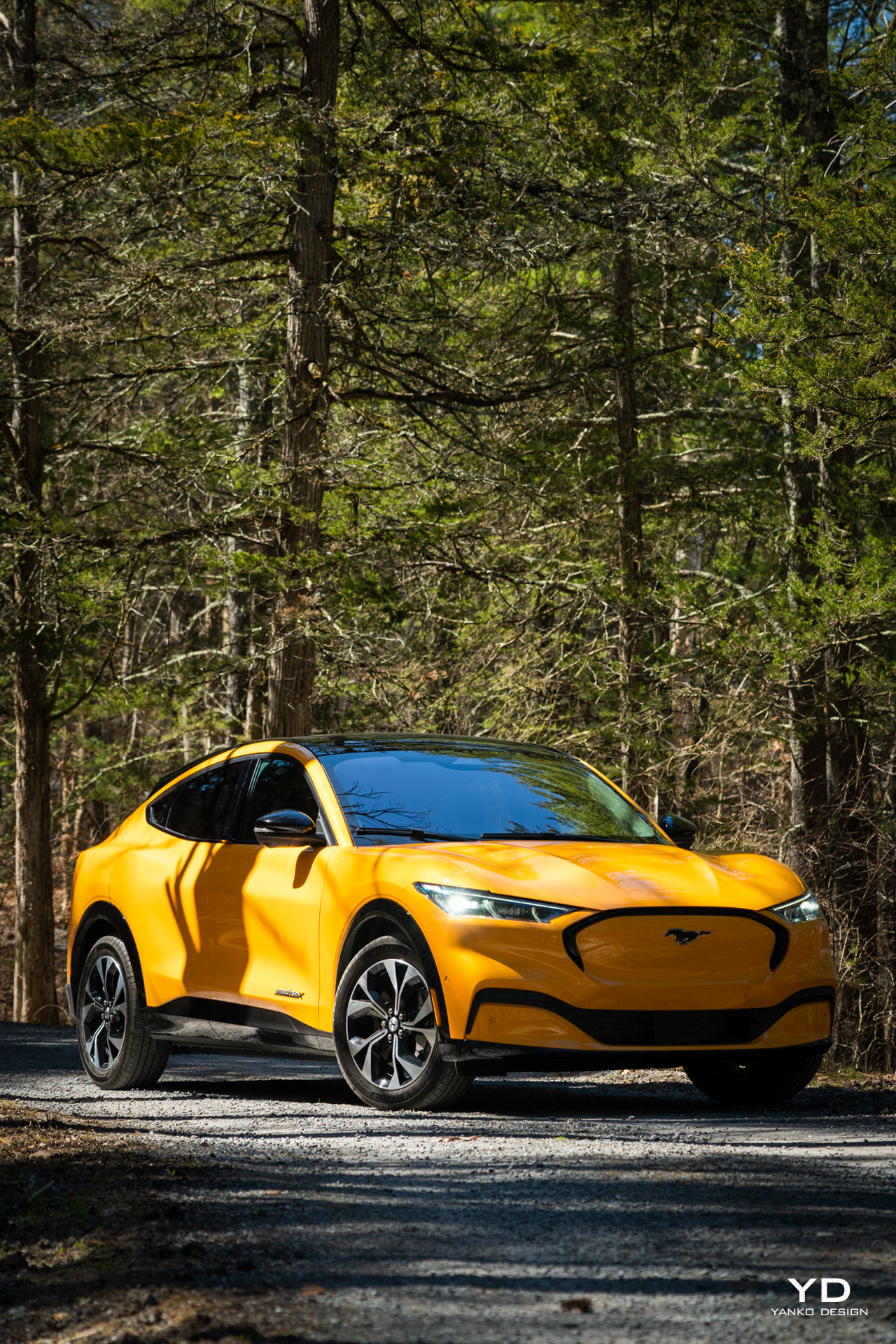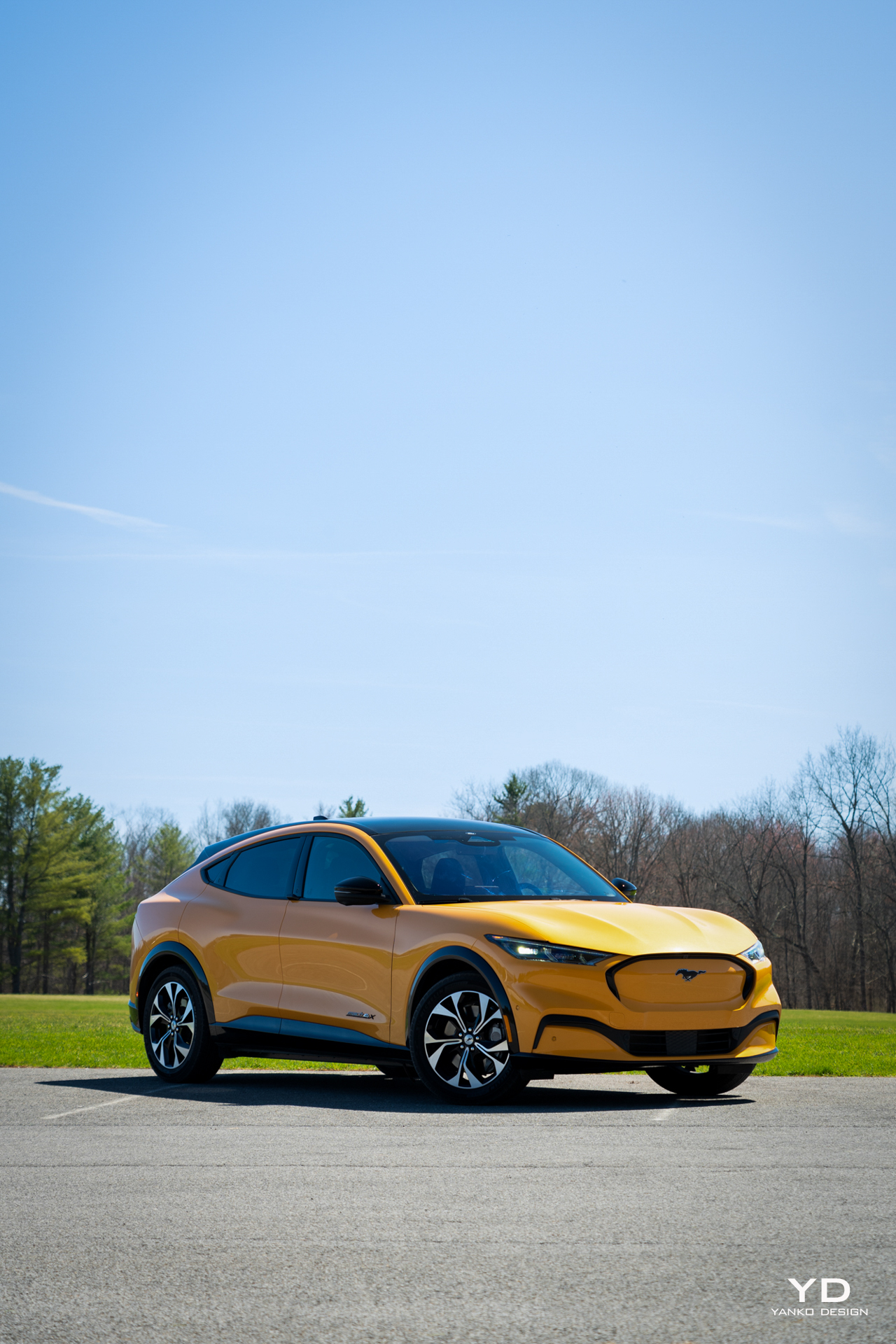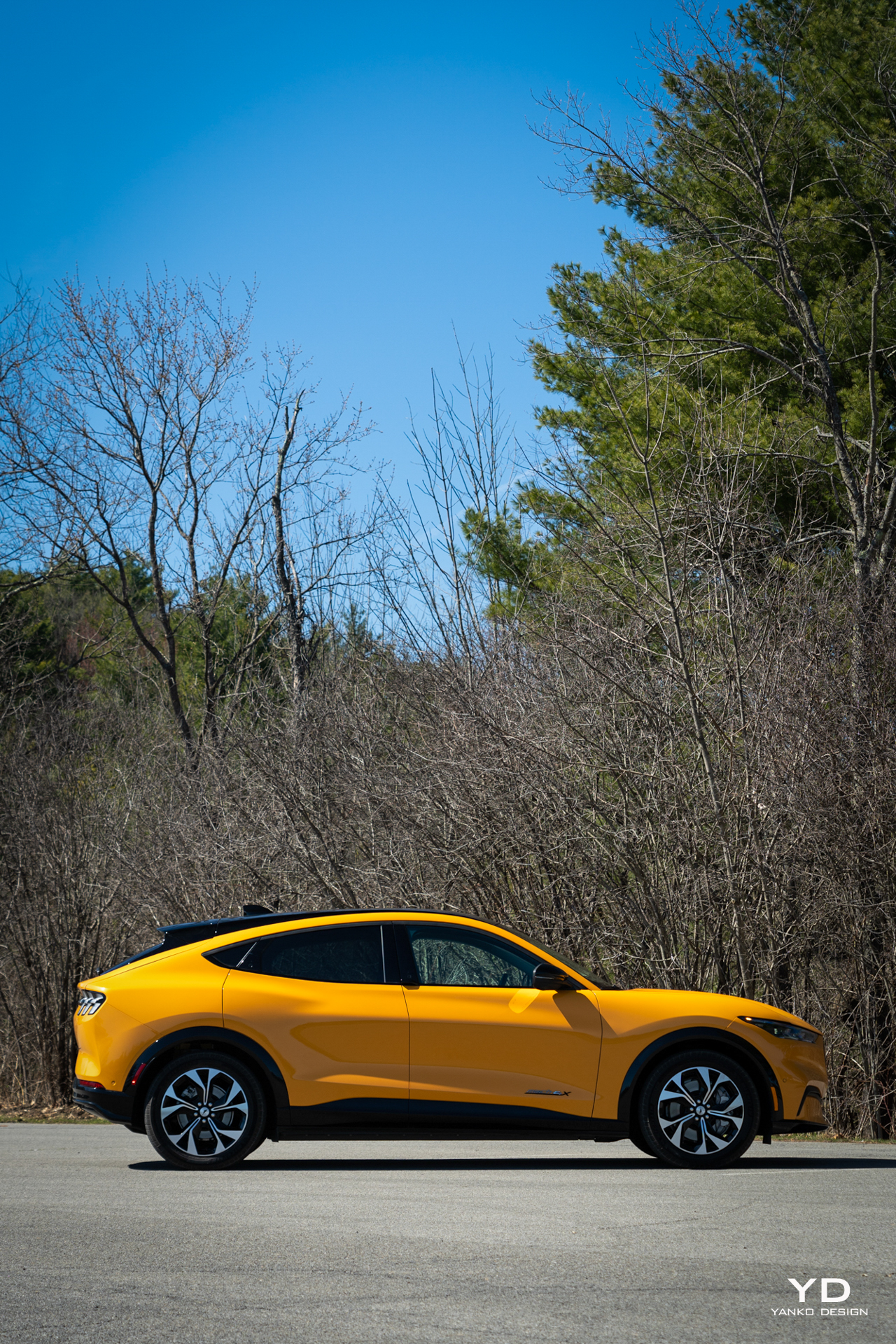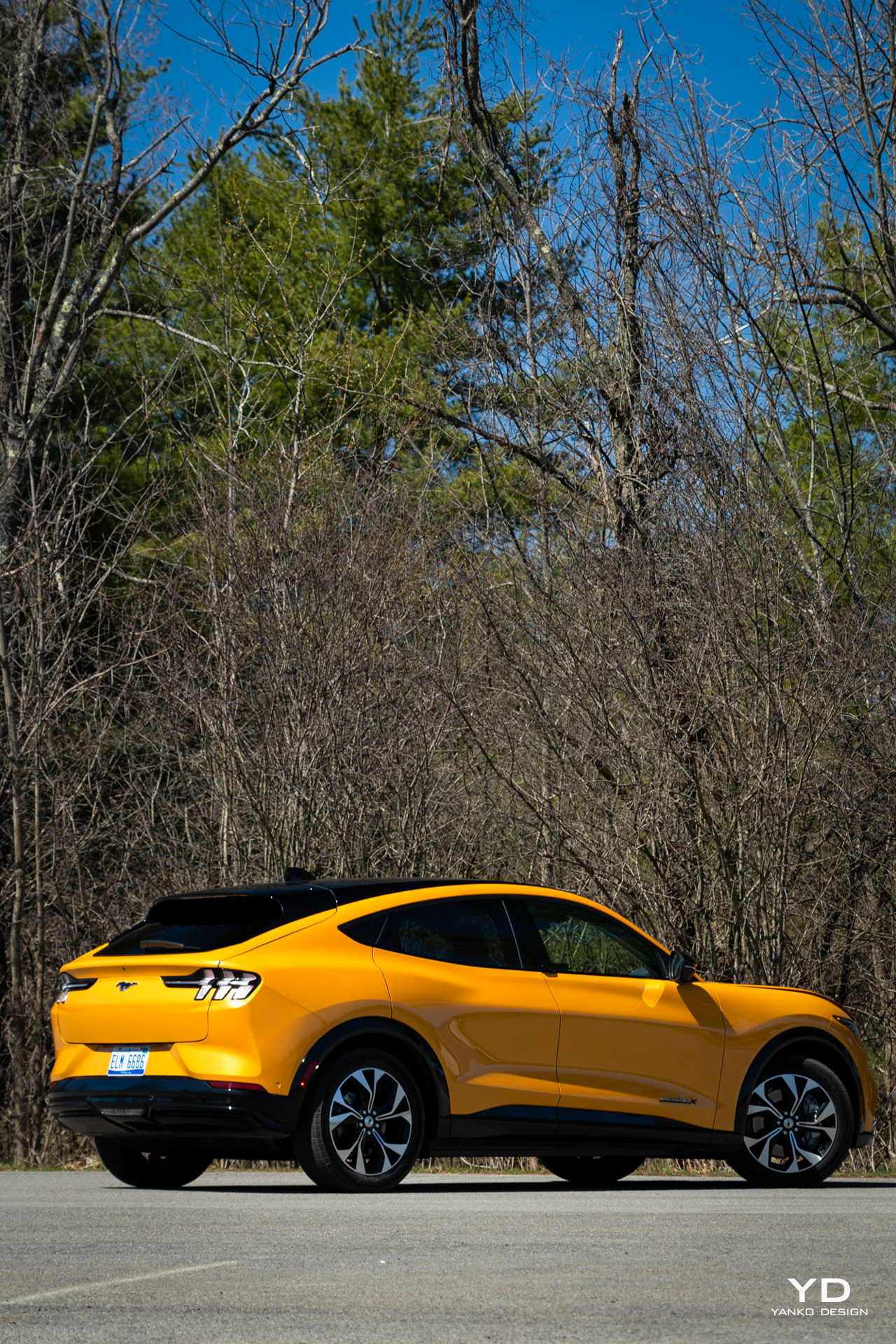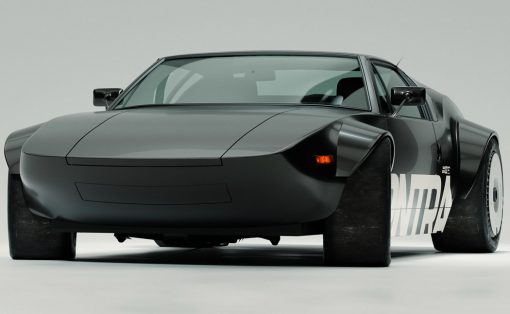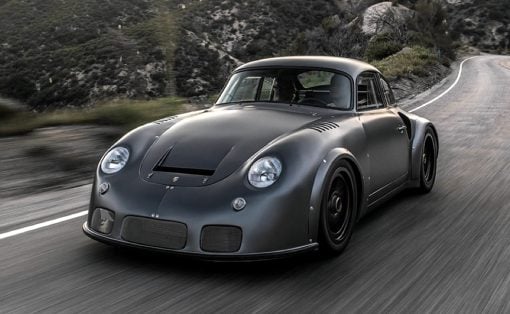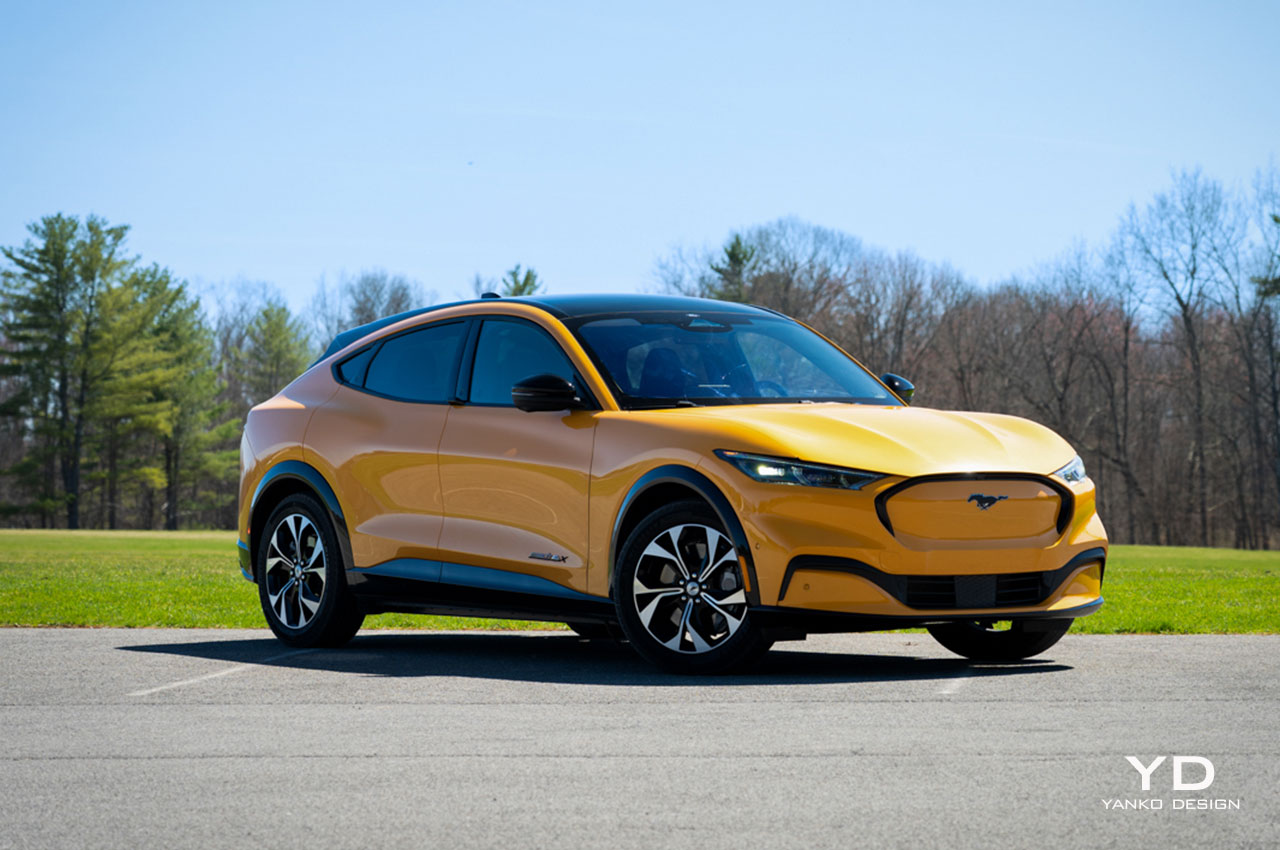
PROS:
- Aggressive style
- Roomy interior
- Solid range
CONS:
- Harsh ride quality
- Sluggish infotainment
The EV market is rocketing forward faster than even we who track these sorts of things could have expected. Global interest in all-electric cars is spiking, leaving manufacturers scrambling to get their battery-powered machines to market. It’s a time reminiscent of the early days of the smartphone boom, when the hottest products were quickly overshadowed by what came next, and those next products never came soon enough.
The Ford Mustang Mach-E is no longer one of those next products, now on the market long enough for Ford to get over most of its early production teething pains, long enough for us to get past the debates of whether this thing deserves to be called a Mustang, and long enough even to start the inevitable special editions like the high-horse Mach-E GT. This, though, isn’t one of those, it’s a Mach-E Premium, the trim that most people will at least consider, in all-wheel drive shape and without much in the way of options. How does it hold up to the latest EVs just hitting the market?
Remarkably well.
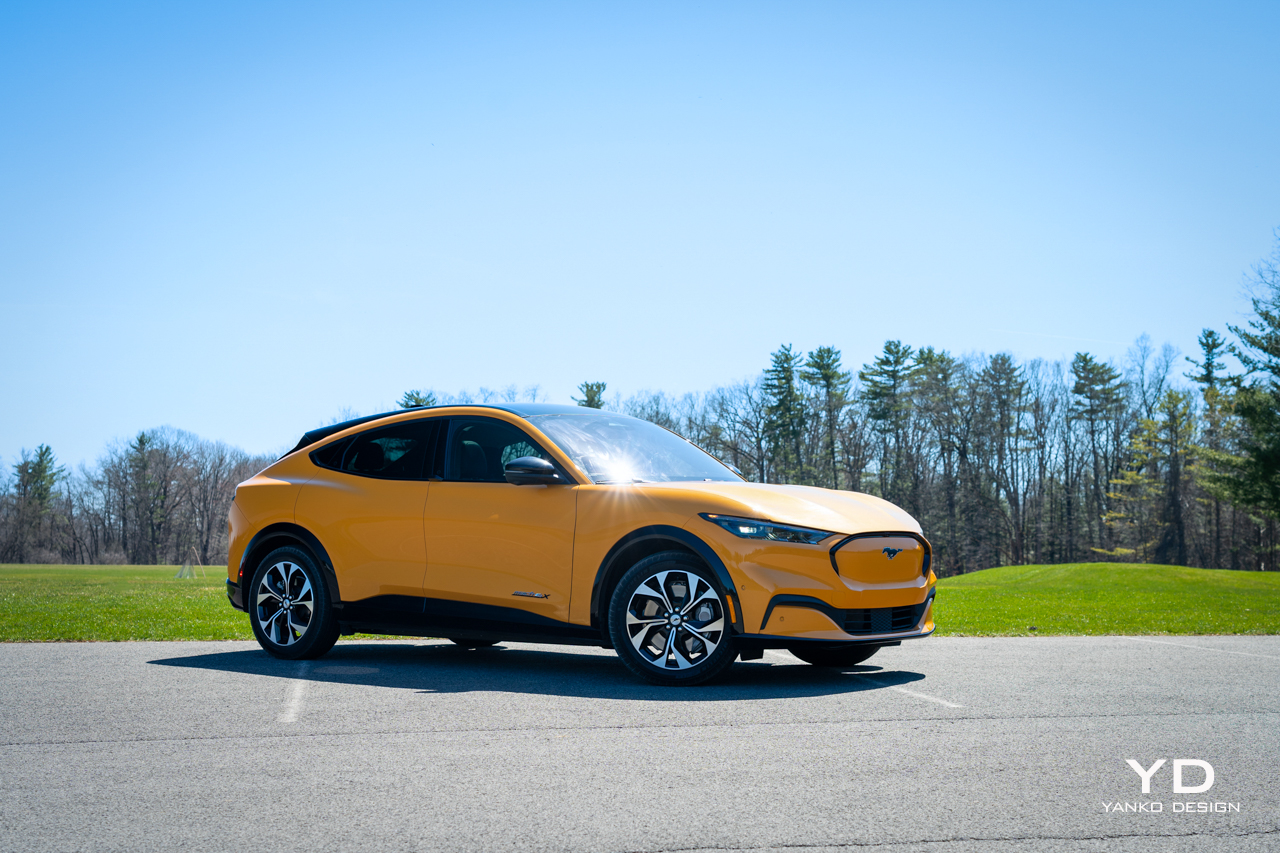
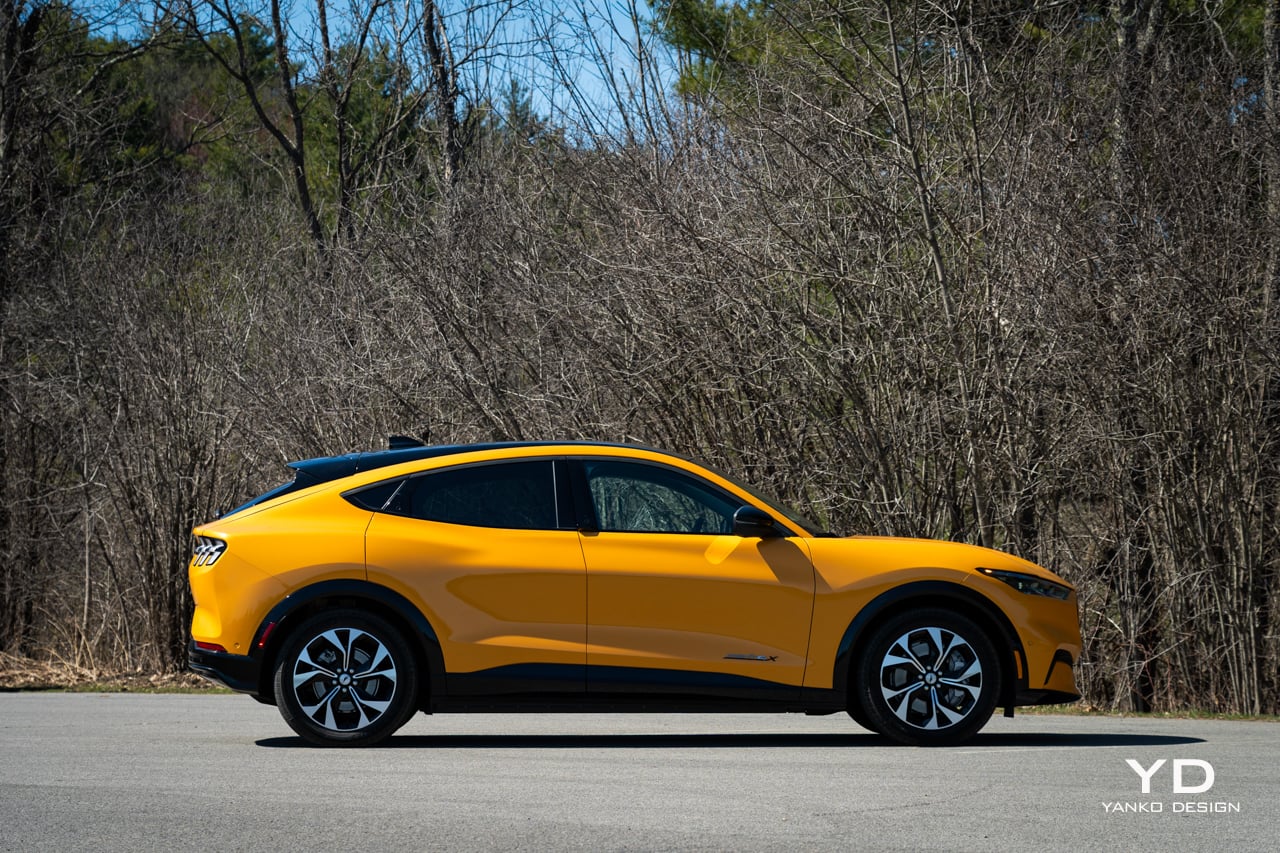
Design
The Mach-E is EV through-and-through, designed from the ground up to be battery-powered. And that’s where it starts, with the battery, which other than the wheels and tires is the part of the car closest to the ground.
The positioning of that battery pack helped to dictate the styling of this machine, which really does share the overall silhouette of a Mustang. Those pronounced fender flares front and rear, the purposeful squint of the headlights, the angular side windows, it’s all quite familiar.
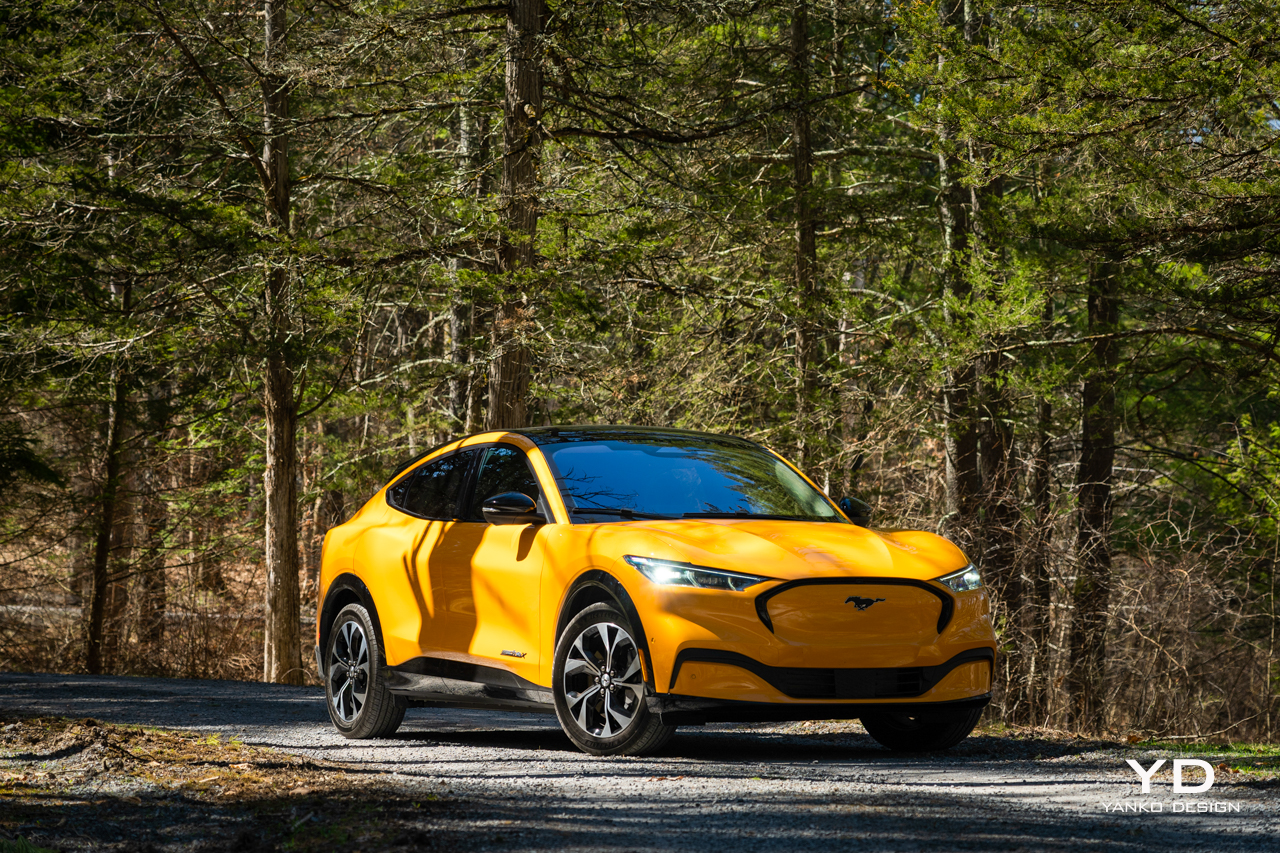
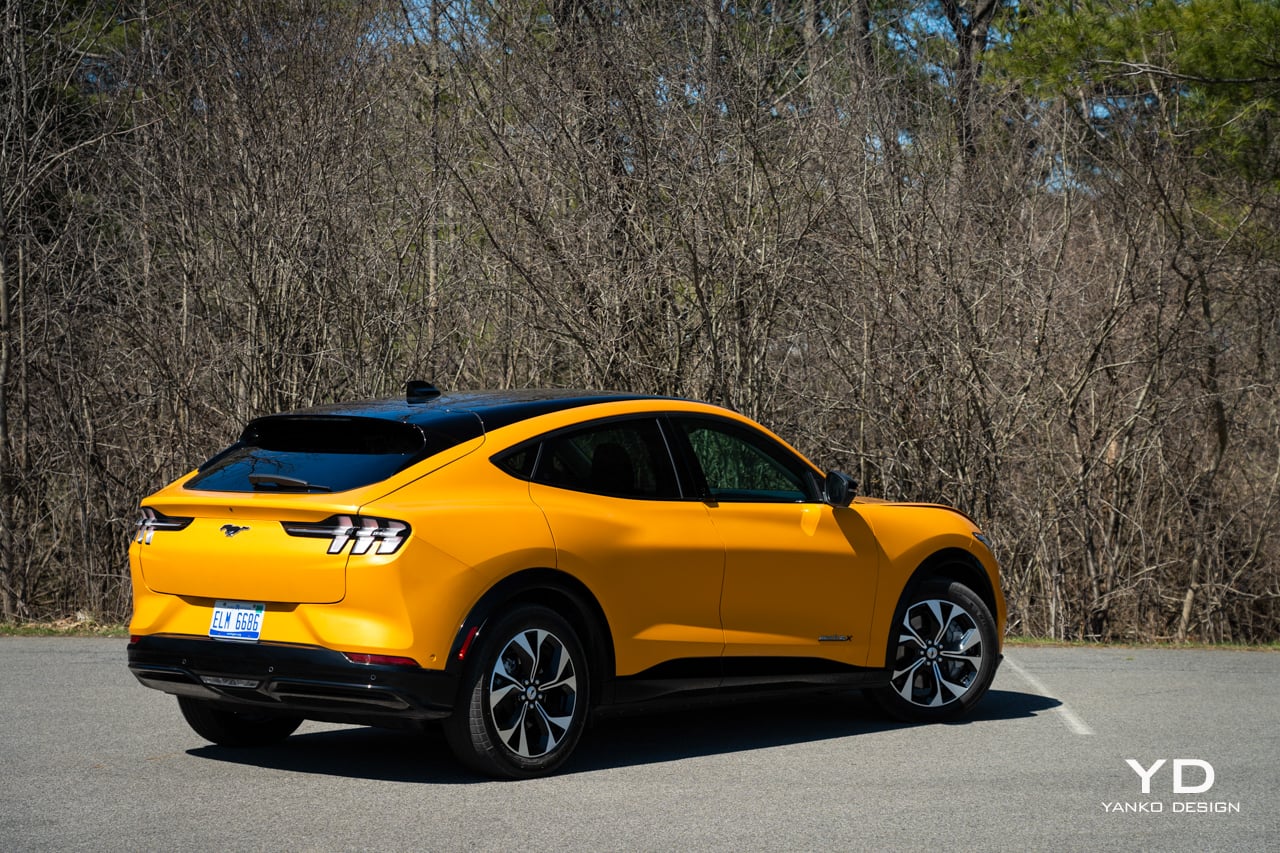
But it’s the taillights where things are most obvious. The three vertical bars are a Mustang trademark and they’re put to good effect here. Also good: the Cyber Orange color. It has a subtle metallic element that brings out the yellow more than the orange on a sunny day. On a cloudy day you might be inclined to say it’s pale, but come back when the sun’s out and you’ll be smitten.
So, this is very much a four-door Mustang with a hatch, styling literally elevated a few inches to make room for that battery. This one has the larger, 91 kWh battery pack, an $8,600 option, but there is a 70 kWh version for those who don’t need to go as far. That powers either one or two motors depending on whether you want all-wheel-drive or rear-wheel-drive, giving a range of ranges from 224 on the low-end (for the dual-motor, small-battery edition) up to 314 miles (for the larger-battery, small-wheel, RWD edition).
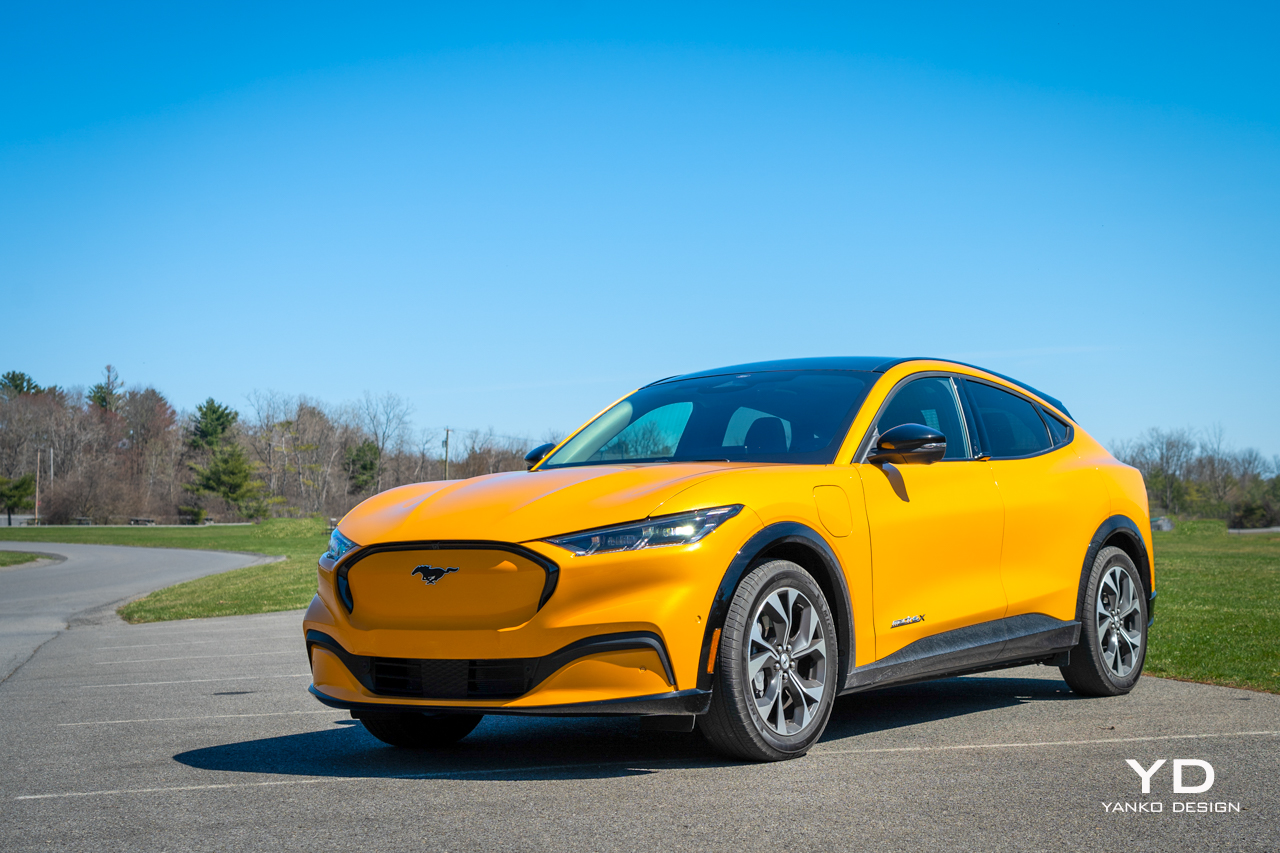
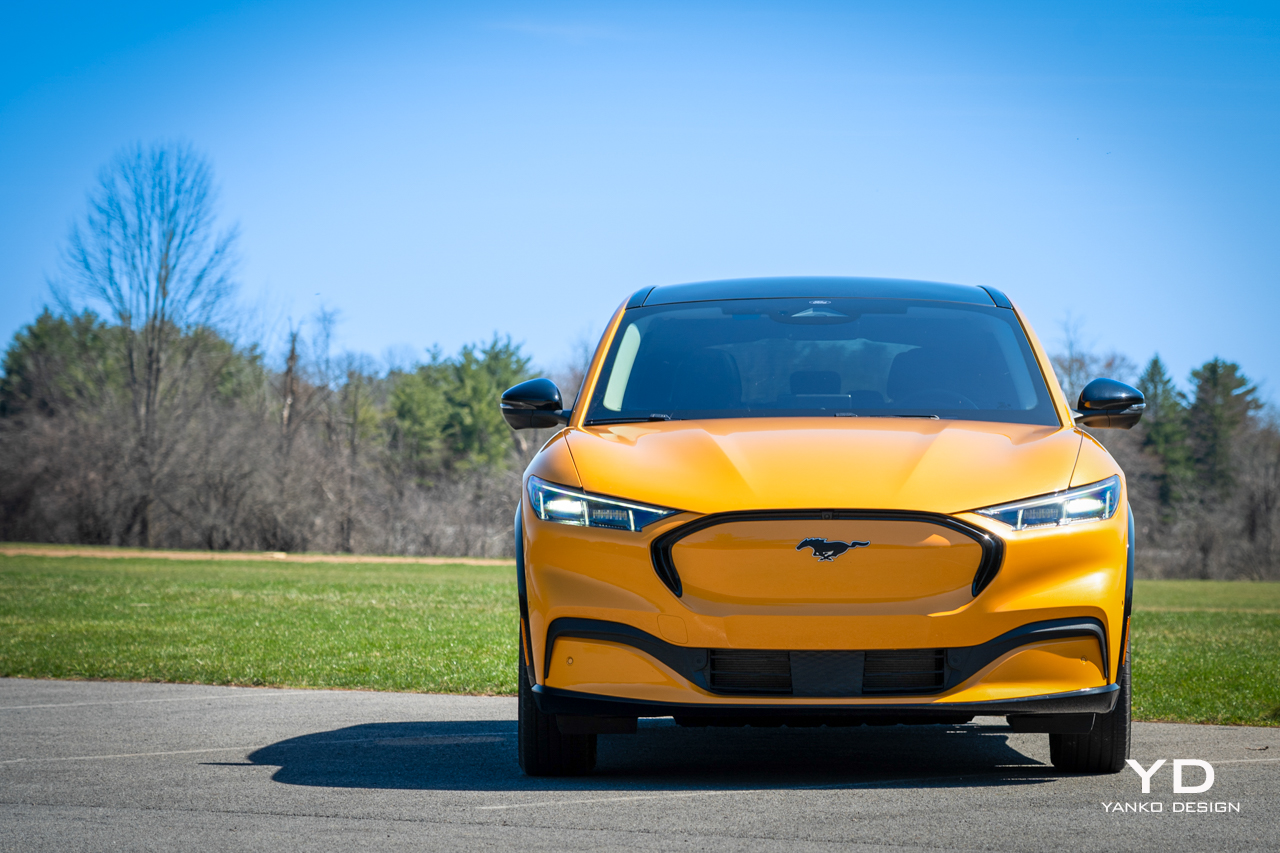
This car here is on the higher end of the spectrum, offering an official EPA-rated 290 miles on a charge. 346 horsepower and a healthy 428 pound-feet of torque come from the combined forces of two electric motors, positioned down between the wheels to ensure a flat floor inside the car, a generous 29.7 cubic foot trunk, and even a perfectly usable 4.7 cubic foot frunk.
Interior and tech
Though slightly shorter than the Mustang coupe, the Mach-E is remarkably roomy on the inside, glass roof not only making everything look bigger but genuinely helping with headroom front and rear. Sadly there is no shade, though the tint seems to keep the glare at bay.
Where the exterior goes out of its way to show its pony car heritage, the interior design does little to draw the mind back to the stable — except for the horses dancing across the various displays on start-up. Though everything is functional and well laid out it’s all a bit busy. On the door cards, one embossed leather pattern clashes with a tight triangular mesh surrounding the controls, contrasting again with a woven mesh over the B&O speakers. The dashboard has the same woven highlights and leatherette pattern, plus a generous amount of fake carbon fiber. Finally, on the steering wheel there’s a different leather pattern that contrasts with yet another clashing texture covering the airbag, buttons surrounded by sparkly plastic of a different color than anything else on the interior.
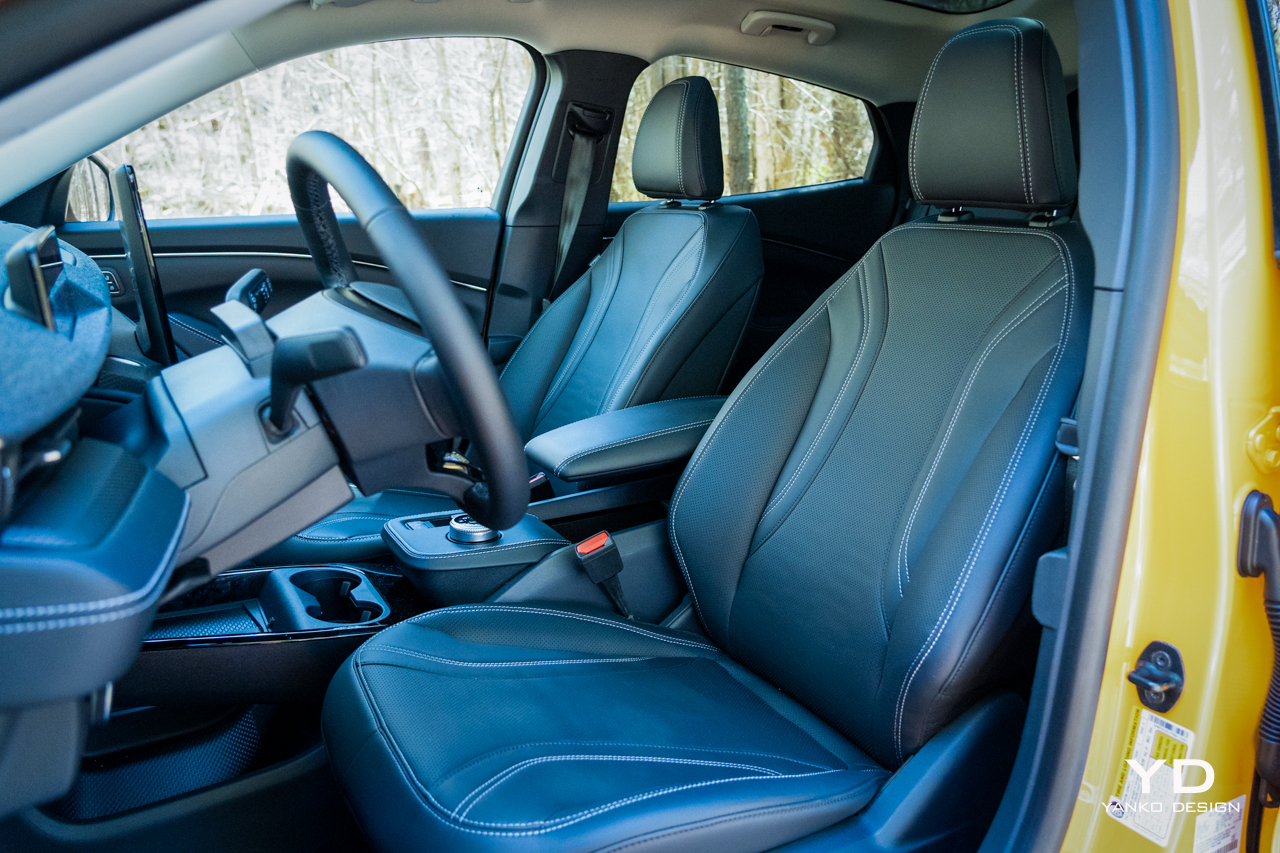
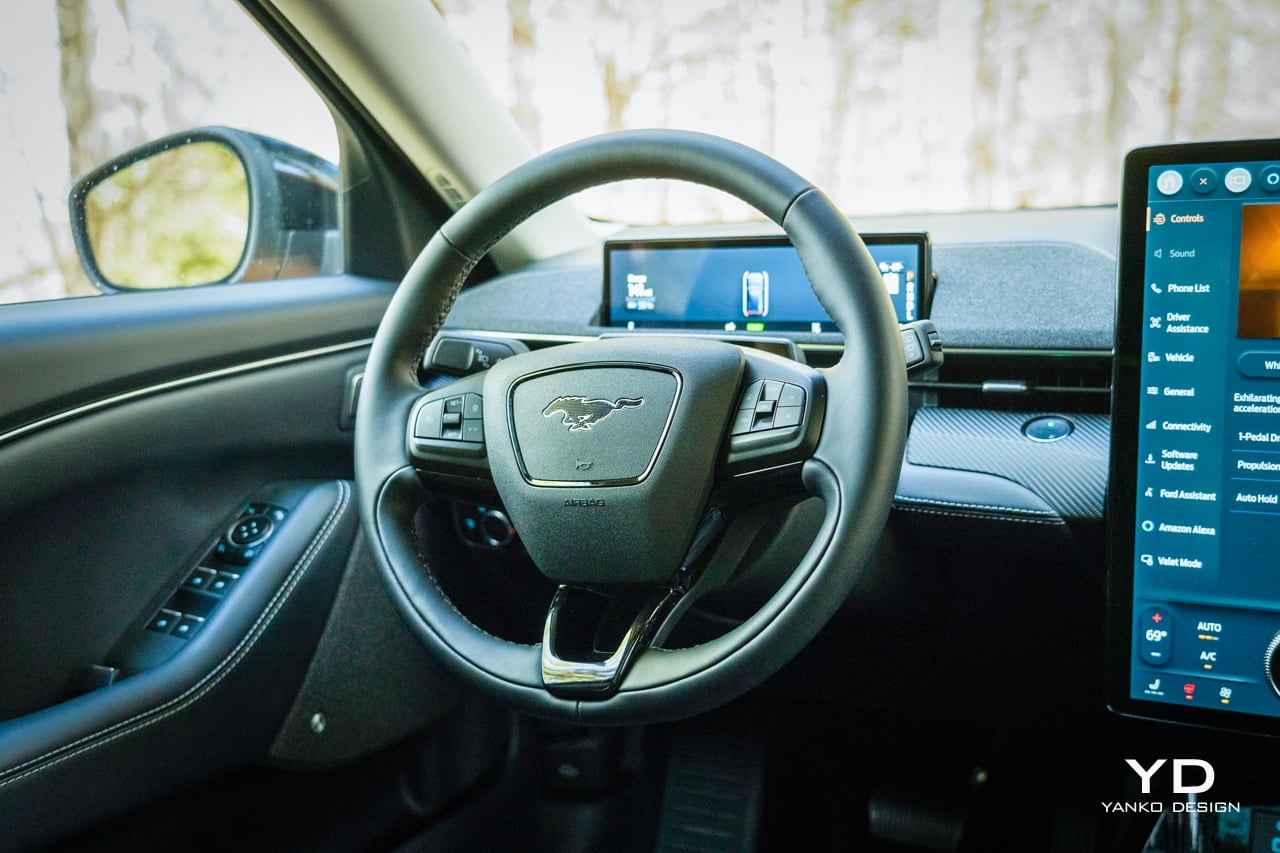
It’s all ostensibly black yet none of it goes together well. The materials, at least, are reasonably fine, soft-touch most places you’ll want to touch.
At the rear there’s seating for three on a 60:40 split folding rear bench. No seat heaters or climate controls back here, but there is at least a pair of small HVAC vents and a couple of USB ports, one -A and one -C. Two more USB ports up front for the driver and passenger, plus wireless charging, which more people will probably go for given the wireless Android Auto and Apple CarPlay.
Front seats are basic but comfortable, power adjustable in the usual ways plus lumbar support, and three memory settings on the driver’s side. These settings can be saved to a driver profile system accessible via the prominent, 15.5-inch central touchscreen, so the car will identify you via your key fob or smartphone and get your seat where you want it before you occupy it.
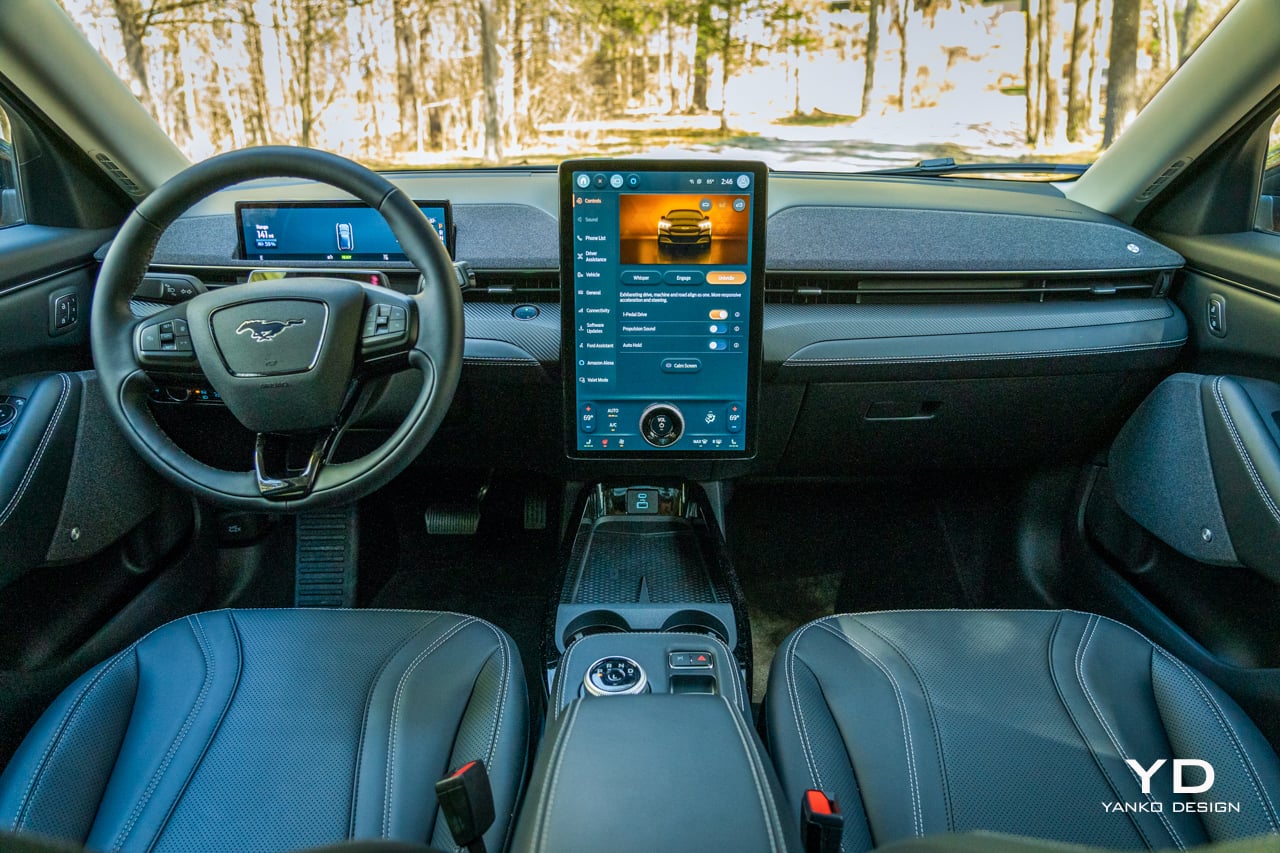
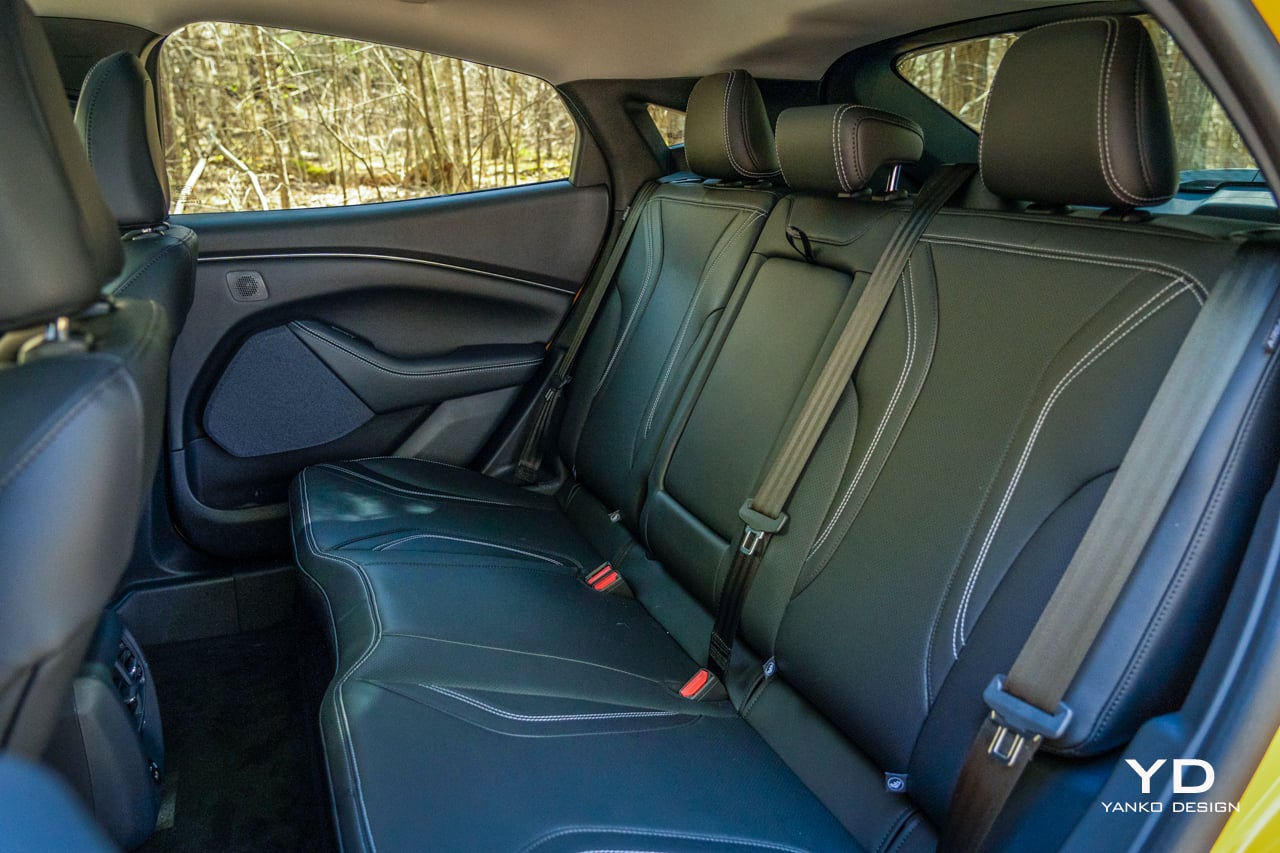
Ford’s Sync 4A infotainment system fills that display well. The main interface is a bit overwhelming with all the menus, heavily derivative of the Model S. It’s effective enough but I wish I didn’t have to bring up a menu to pop the trunk or frunk.
The navigation experience is simple but comprehensive, serving up lists of local chargers plus details on all the junk food available on the next highway exit. When you do hit the charger, you can fire up YouTube on the main screen or play any of a half-dozen games, titles that seem to exist to prove a point rather than to provide long-lasting entertainment.
My only real problem here is the sluggishness. When cycling the HVAC temperature or toggling the seat heaters, there’s just short of a full second’s delay between your tap and the car’s response. Worse, when you move from one screen to the next, you’re often greeted with a pop of static through the speakers.
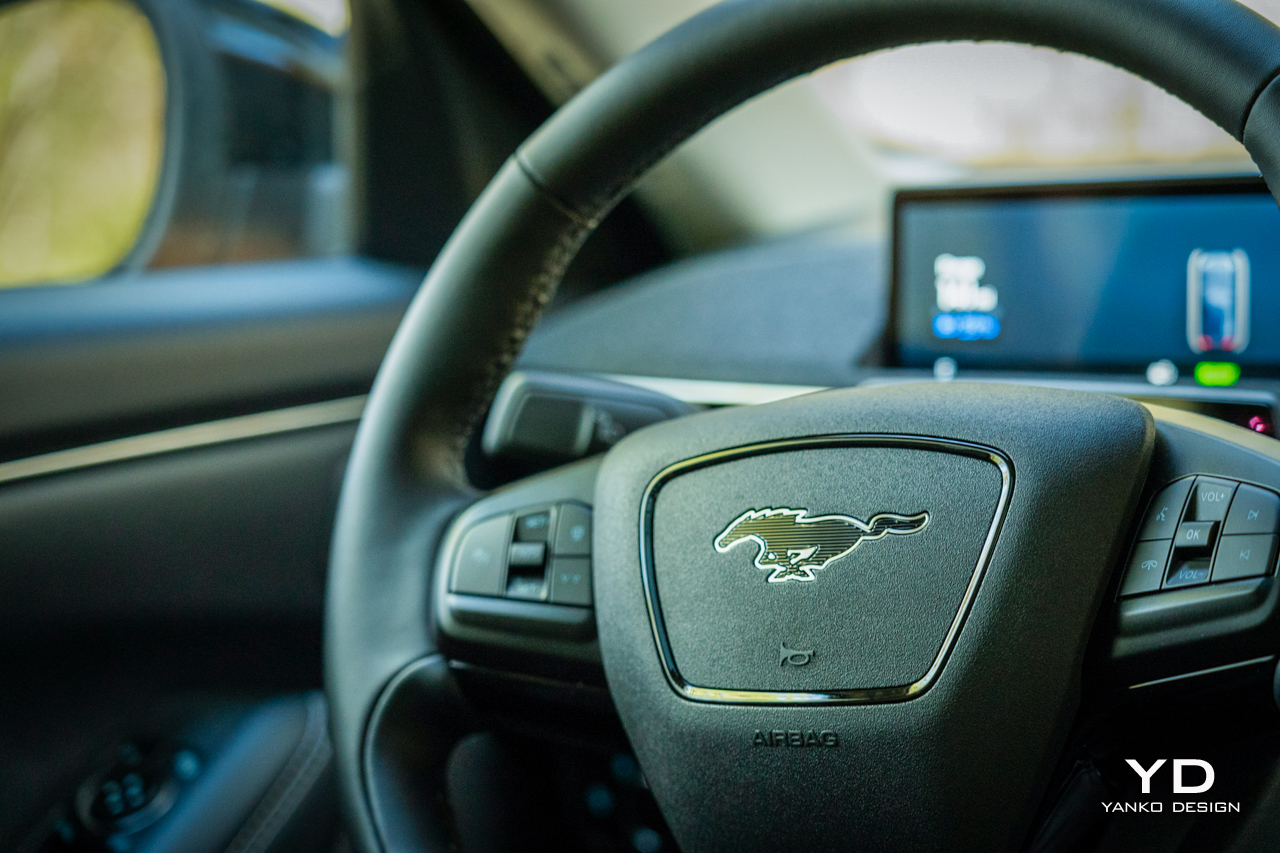
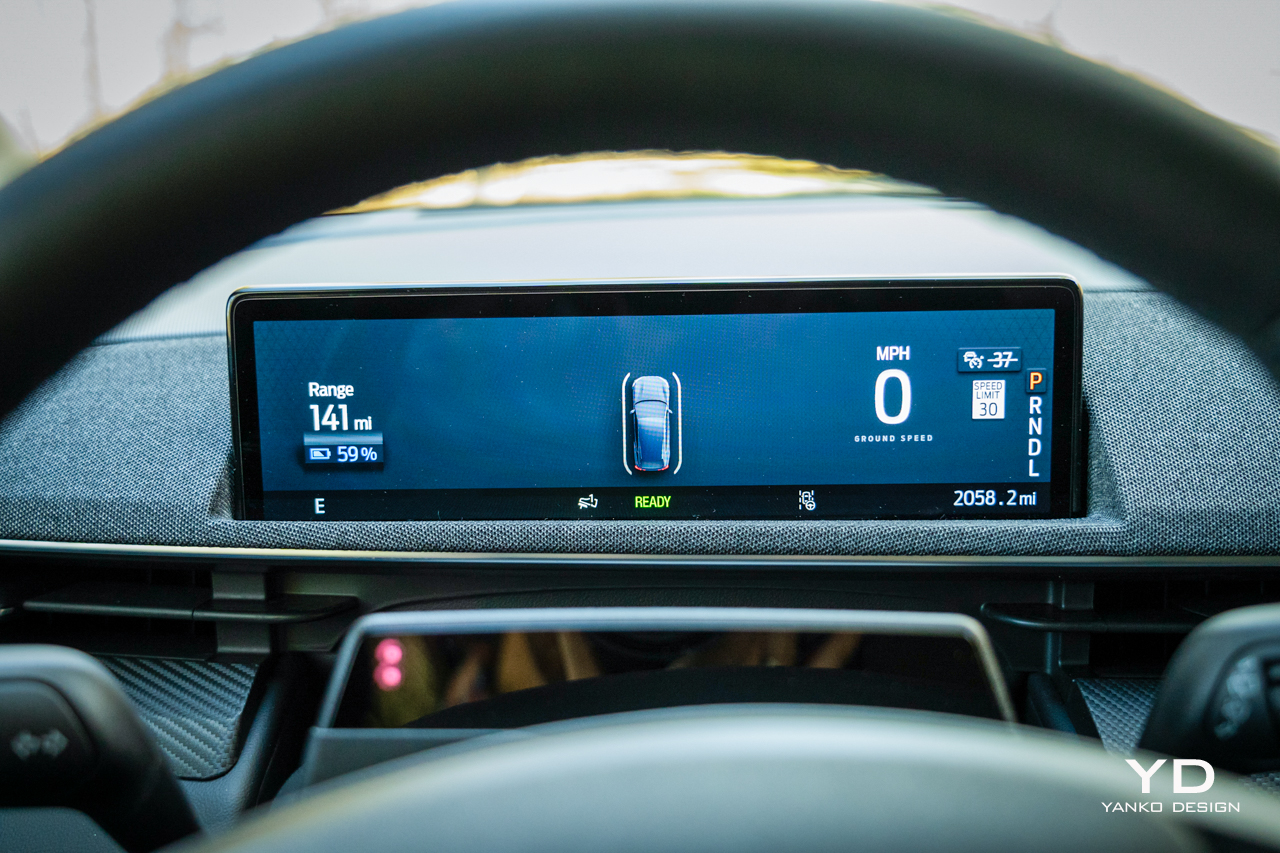
That can be painful given how powerful the sound system is, this Premium model having the 10-speaker B&O sound system. It certainly delivers a lot of sound with a real tendency towards bass, but is painfully lacking on the top-end.
That’s a bit like the motors, as it turns out.
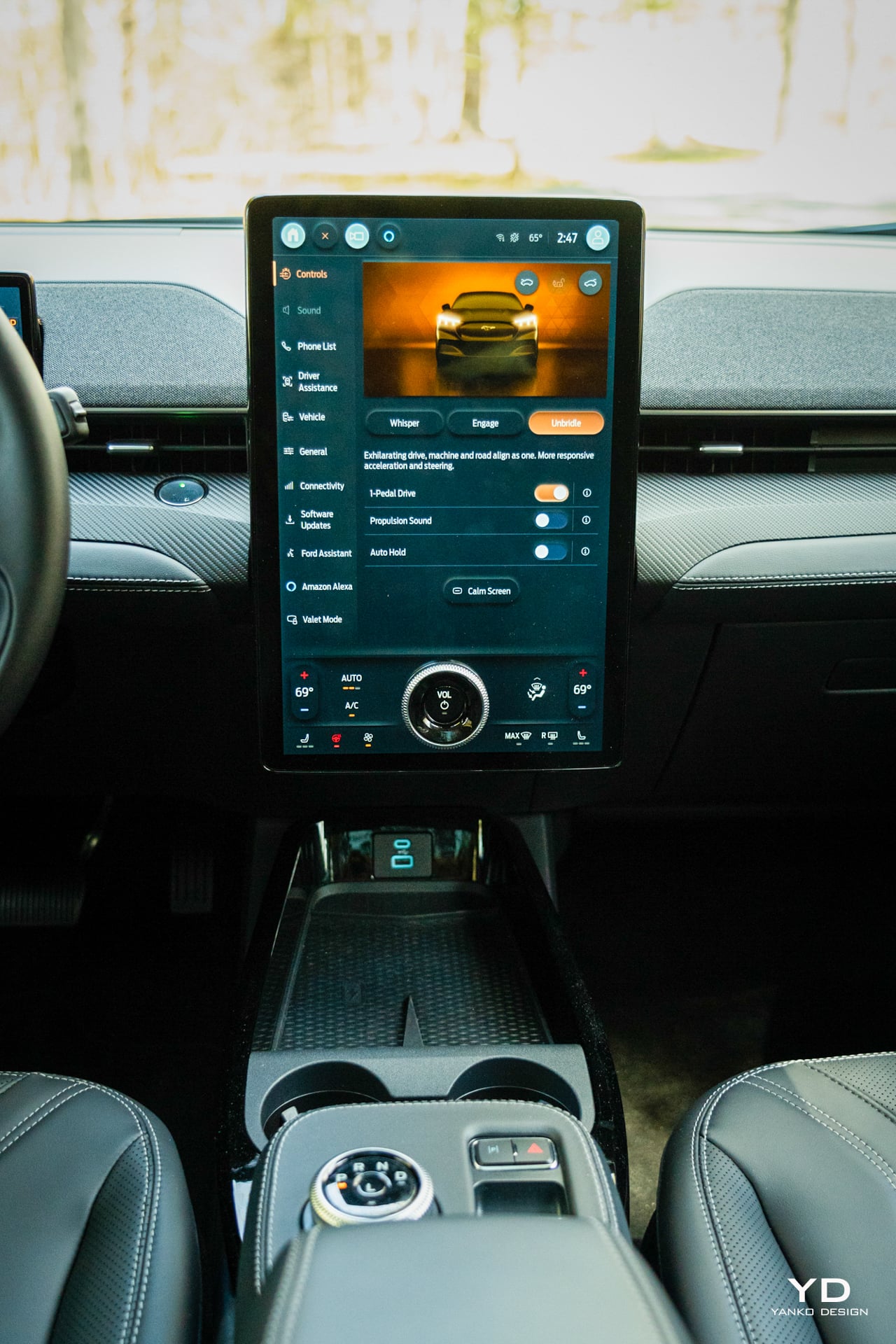
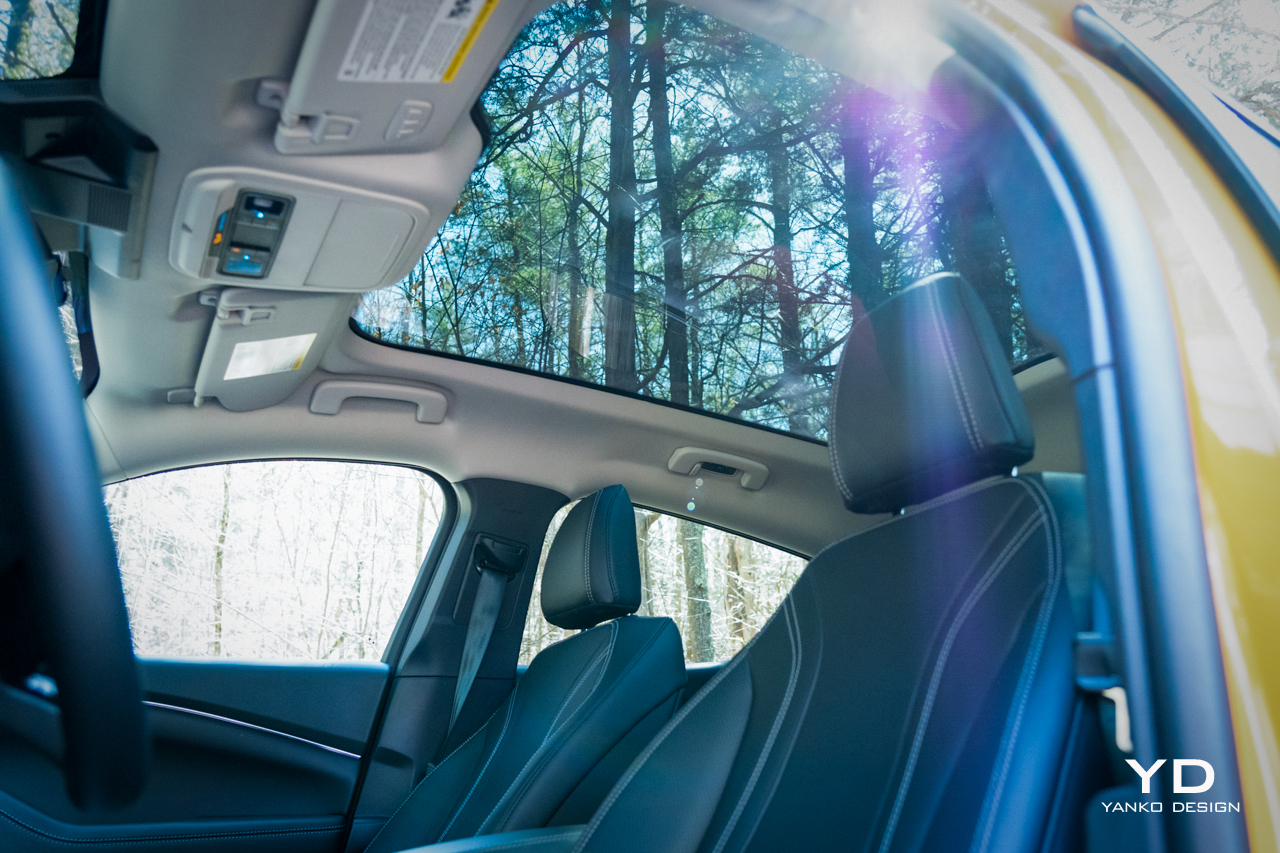
Performance
If you purely look at the power numbers here you’d be forgiven for believing this is a sports car of a true Mustang nature. After all, 428 lb-ft of torque is more than a Mustang GT. But, there is of course another number you need to consider, and that is weight. This Mach-E, with its dual motors and larger battery, weighs 4,838 pounds. That’s about 1,000 more than said coupe GT.
When it comes to hard acceleration, you feel that mass. Yes, the Mach-E scoots forward from a stop sign or light with enthusiasm, but before you’ve hit 30 the power begins to fade. That’s even if you go to the car’s sportiest mode, evocatively named Unbridle. This is not a slow car — 4.8 seconds to 60 is far from humble — but a Tesla Model Y, even the plain Long Range model, feels quicker.
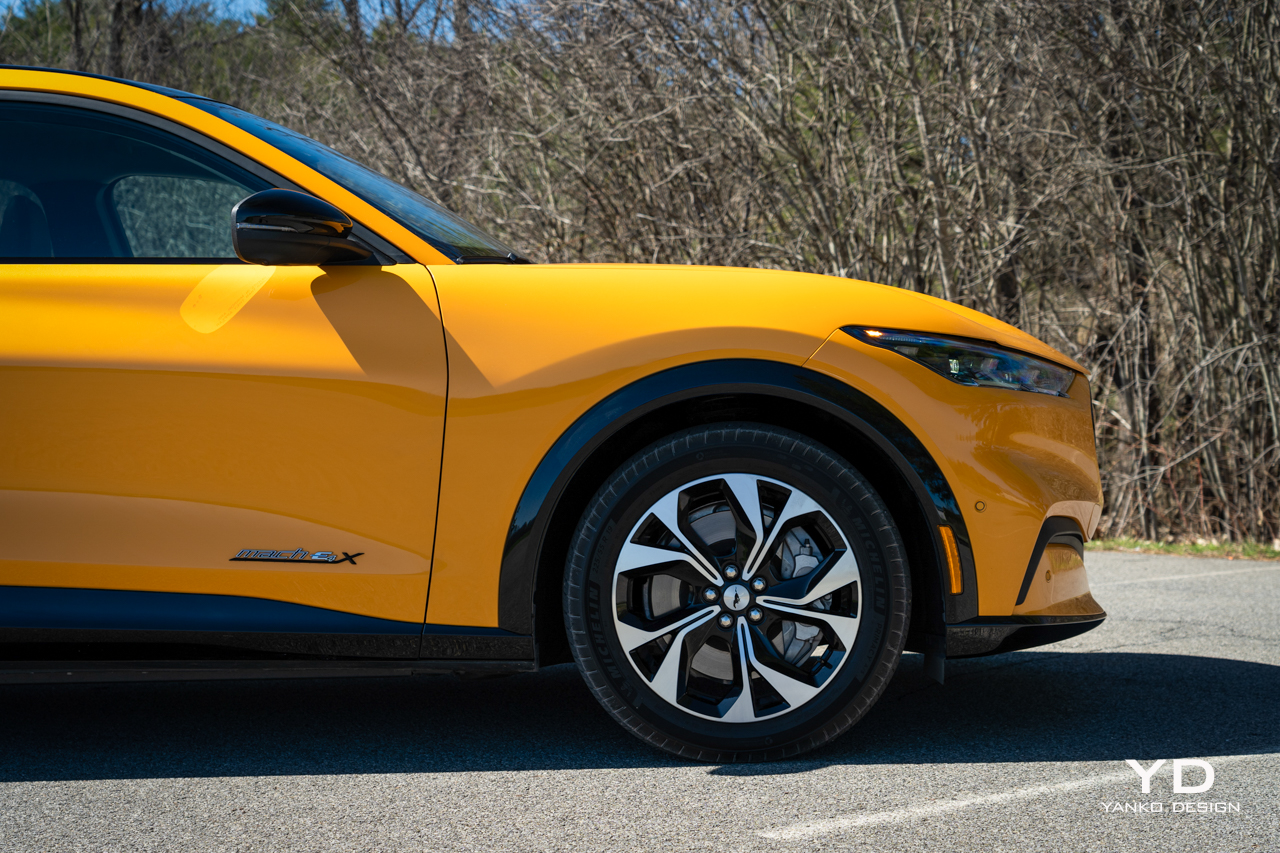
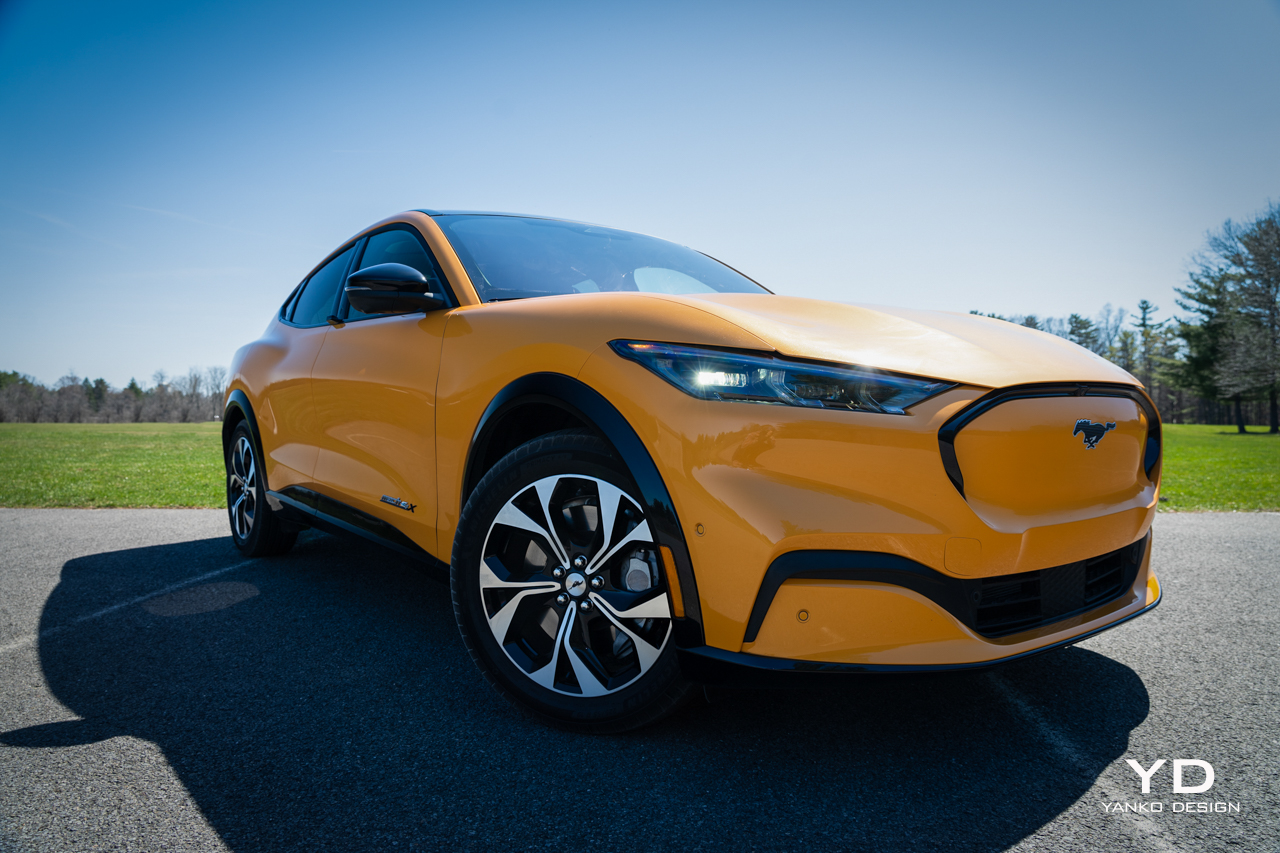
The Mach-E, though, is way more engaging in the corners. The Mustang turns sharply and, though the steering doesn’t have much in the way of feedback, the chassis is quite communicative through your seat, giving you a good idea of what’s going on. Low-rolling-resistance Michelin Primacy tires will also speak, squealing loud and proud whenever you get anywhere near the limit. Impressively, it was almost always the rear tires that spoke first, the Mach-E showing its roots by constantly spinning up the back when accelerating hard out of corners. Even with the traction control well and truly enabled this Mustang likes to shake its tail.
That engaging drive through the corners comes at a real ride quality penalty. On the 19-inch wheels and tires the car is harsh over bumps and can feel more than a little unsettled when cornering on poor surfaces. Looking for a little more comfort? Try and spec the smaller, 18-inch wheel and tire package if you can.
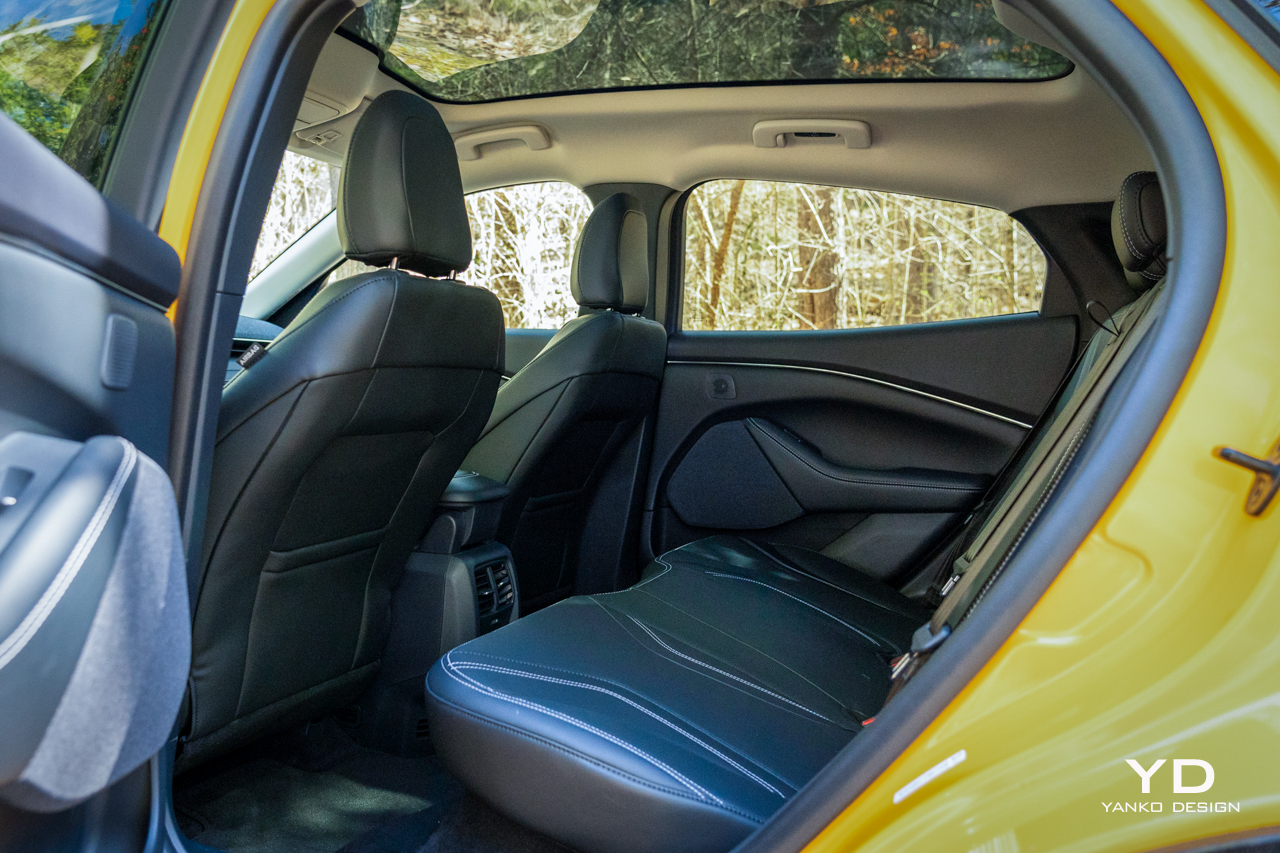
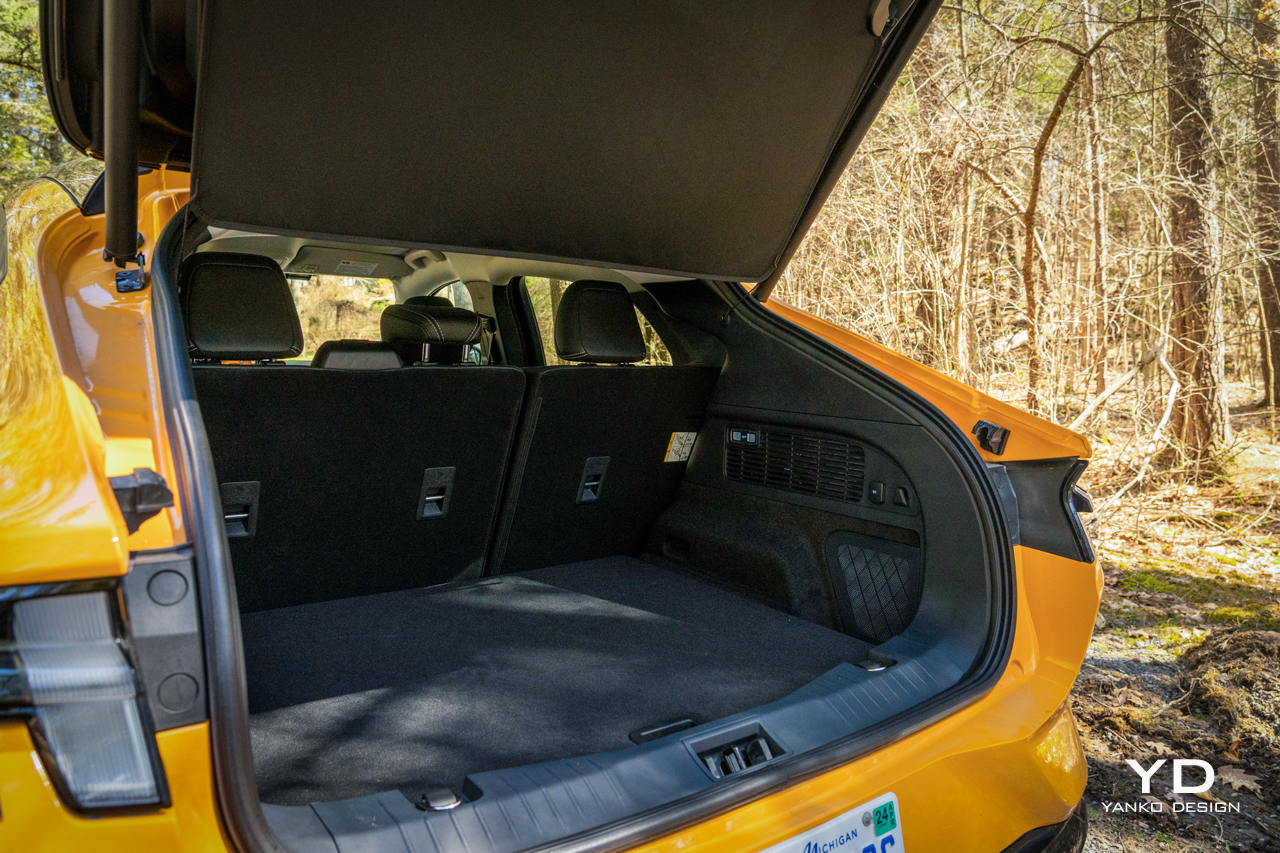
On the safety side, Ford has recently rolled out an update to its hands-off BlueCruise system, and the car I tested was one of the first to receive this update. Similar to General Motors’ Super Cruise, BlueCruise uses infra-red cameras to monitor driver attention and, on approved roads, allows fully hands-off driving. With the new version, the car will also handle automated lane changes (though the driver needs to prompt them with the turn signal stalk), and will even hug one side of the lane or the other to provide more room when passing cars.
I spent multiple hours using this system and it proved completely reliable and confidence-inspiring. It doesn’t seem to quite have as many highways cleared for use as Super Cruise, but I drove for well over 100 miles in one go with my hands off the wheel, only briefly taking over when going through toll booths. Whenever my eyes wandered — either when scrolling through media in YouTube Music for too long or pondering an upcoming fast food joint — the car was quick to prompt me to pay attention to the road ahead. That’s a very good thing.
Beyond that, the Mach-E has Ford’s Co-Pilot 360 active safety suite, including adaptive cruise, blind-spot monitoring with rear cross-traffic alert, lane-keeping, automatic emergency braking, and automatic high-beams.
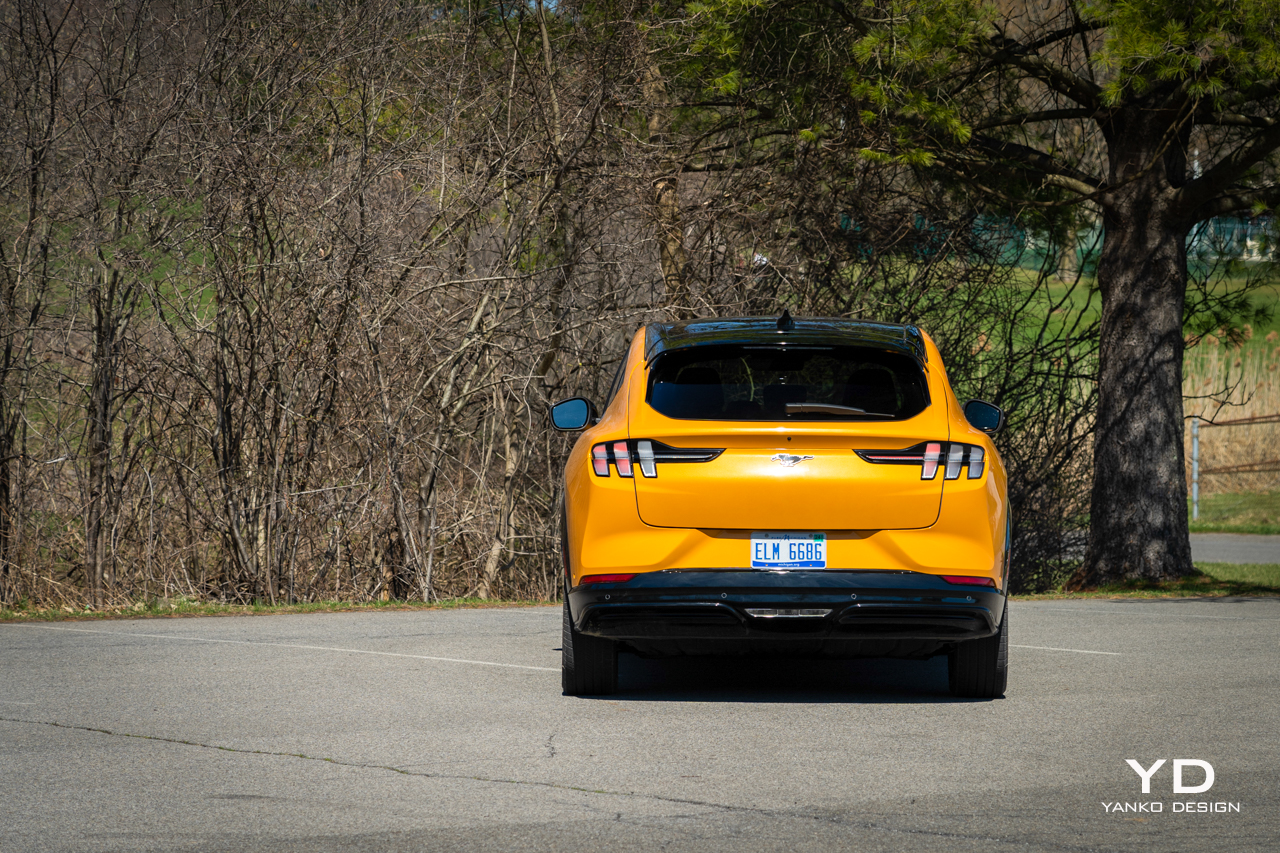

Pricing and Options
The lowest-spec Mustang Mach-E, the Select, starts at $45,995. The car you see here is the higher-shelf Premium trim, with its starting price of $57,765. Add on $795 for the Cyber Orange paint and $8,600 for the extended range battery, plus a $1,300 delivery charge, and you have a final price of $68,370.
While it’s a little less responsive in a straight line than a Model Y, it’s still overall a better driver, offering more visual style and personality to boot. The market is moving forward, but even though Ford’s electric Mustang is no longer the new kid in the stable, it’s still a strong runner in an increasingly competitive pack.
